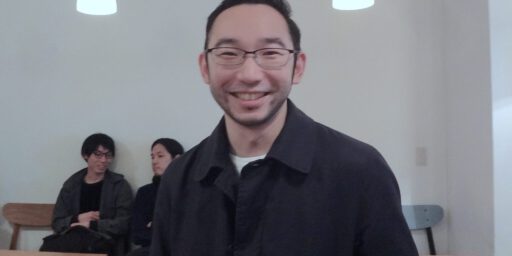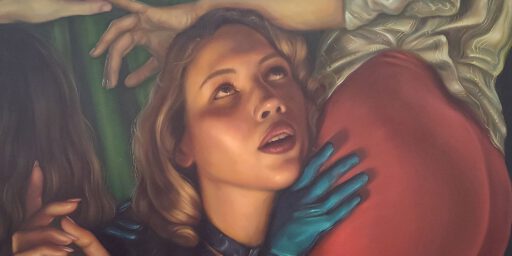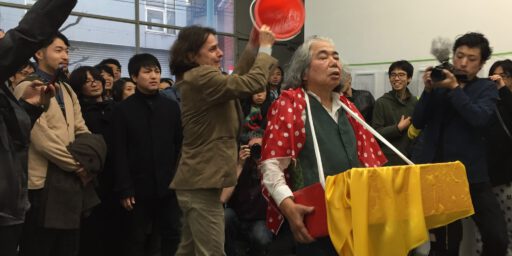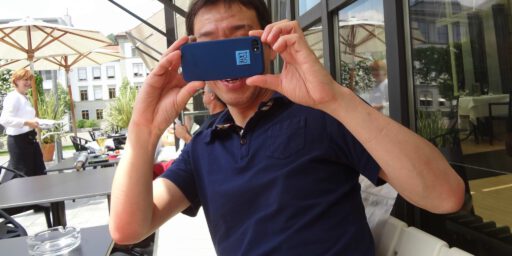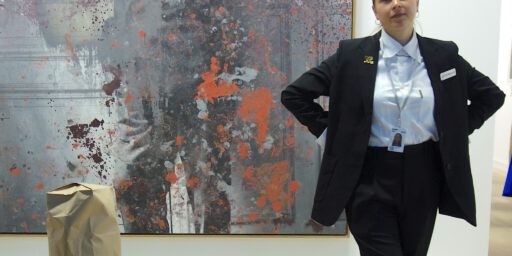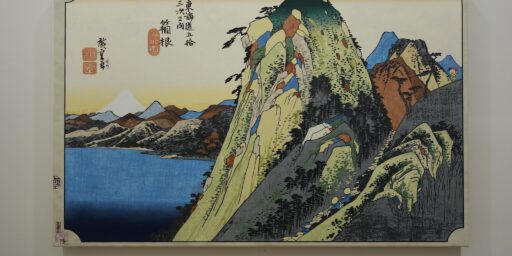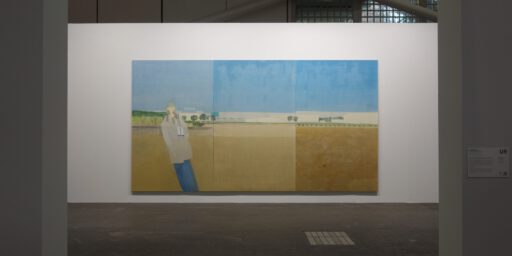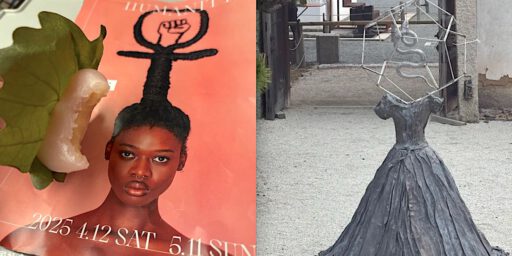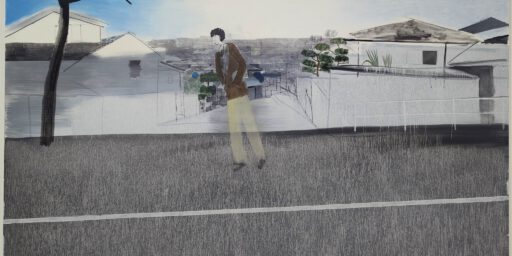現代美術のスター 長島有里枝 @ MAHO KUBOTA GALLERY Contemporary Art Star NAGASHIMA Yurie @ MAHO KUBOTA GALLERY
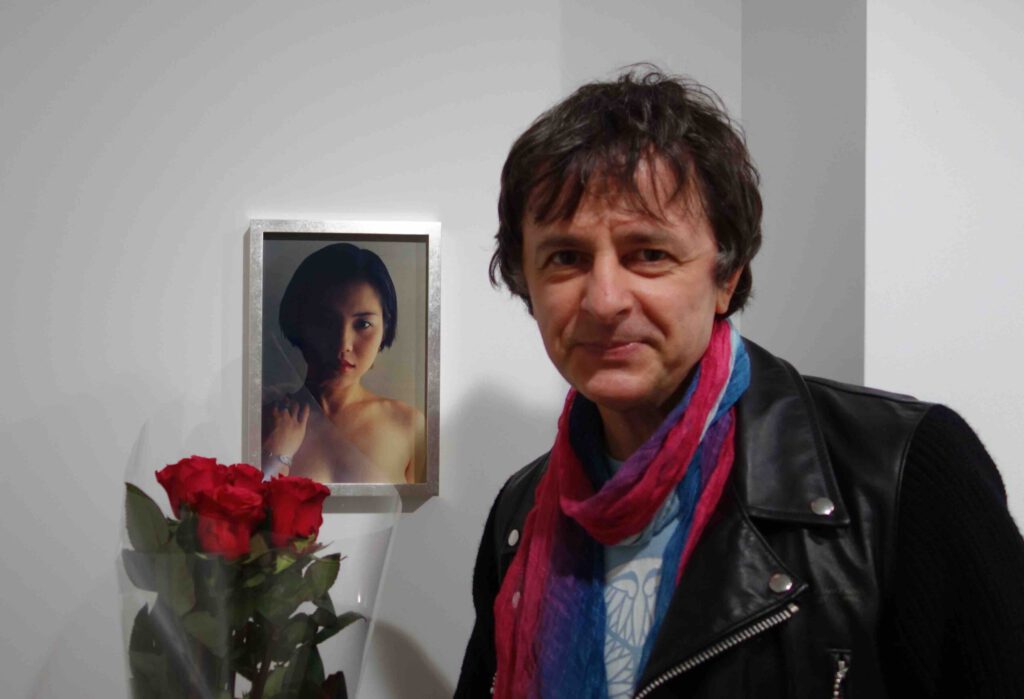
NAGASHIMA Yurie 長島有里枝 arrived as a confessional artist, using raw material of the self: body and soul.
Her artistic physicality, articulated through an extraordinary talent of sensitivity, demanding provocative objectification, with both, intro- and extroverted moments of intimacy, – translate into creative qualities I am very much attracted to.
Her work remains a riposte to the weird constipated conformism of Japanese respectability, whilst offering an emancipated character of (controlled) vulnerability, which I rarely find amongst artists.
Her body of work “Self-Portrait” from 1993 can be called a masterpiece in Japanese contemporary art. Taking b/w nude photographs together with her mother, father and brother manifests the artist’s “anti-conformista” attitude. Radical per se, but vulnerable in public. A very strong social commentary on post-war Japan, about the inner soul of Japanese people. Through psychoanalysis of Nagashima’s “Self-Portrait” series, various private, intimate constellations can accelerate an interesting discourse about Japanese society. “Shame” means obstruction. Emancipation means self-determination. Social pressure, rules, norms in Japanese daily and private life expose some kind of mental illness, which may develop, for example, into the “Hiki-komori” 引きこもり or the オタク “OTAKU”-world. Besides, symptoms and risks of suicidal depression are quite common in Japan.
Let’s admit: no other Japanese artist had the guts to literally having her/his own family members laid bare in a similar way like NAGASHIMA Yurie.
Since that day in 1995, when I attended the legendary opening of her “Family” exhibition, the grandiose debut, the ‘big splash’ together with Catherine Opie, my interest on Nagashima’s artistic practice remained focussed and enthusiastic. See my homage with the last picture, which is taken from the contact print of that PARCO Gallery Opening, 25 years ago. Unplugged Japanese artistic photography history.
In the meantime, I have seen her newly contextualized exhibitions, read some of her texts and interviews, which resulted in buying one of her works for my collection at her representative MAHO KUBOTA GALLERY, see the attached links and pics.
English:
https://www.mahokubota.com/en/artists/yurie-nagashima/
日本語:
https://www.mahokubota.com/ja/artists/yurie-nagashima/
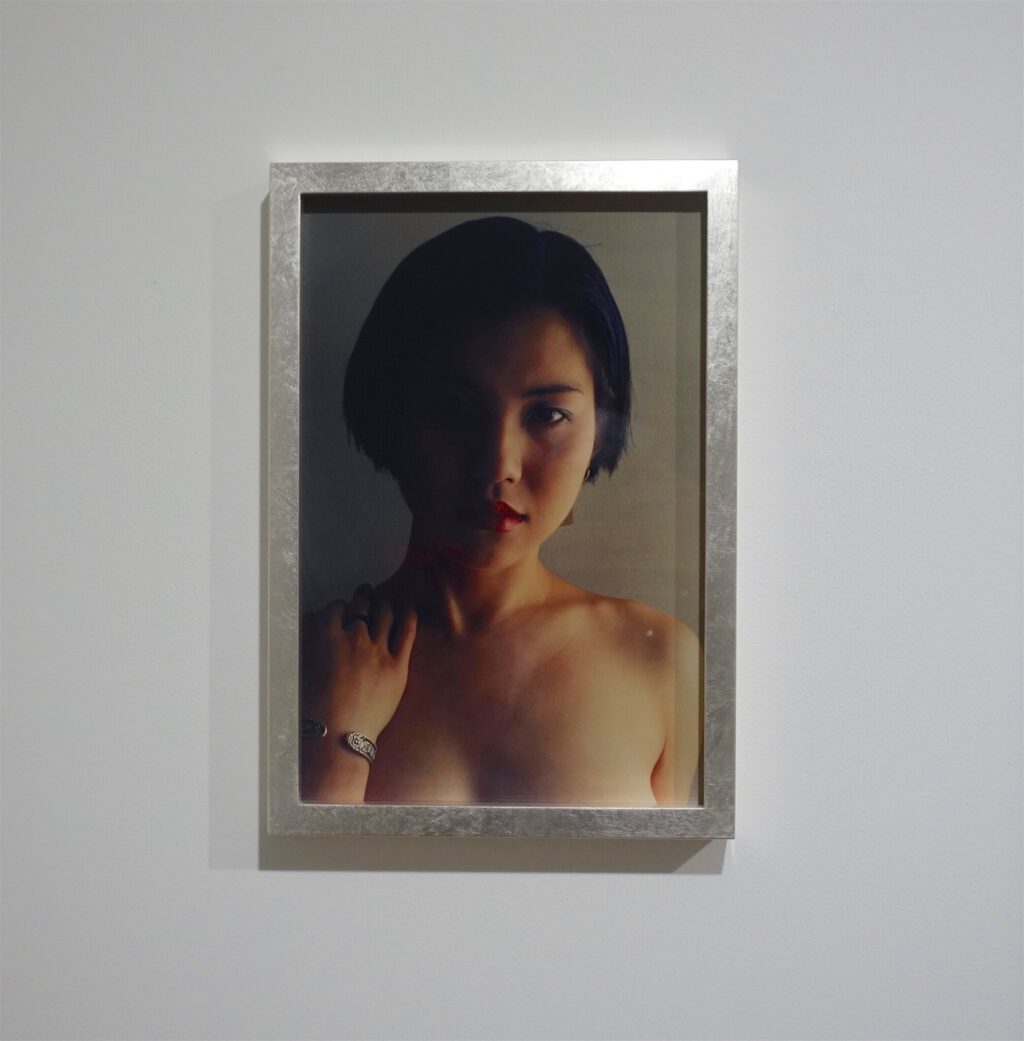
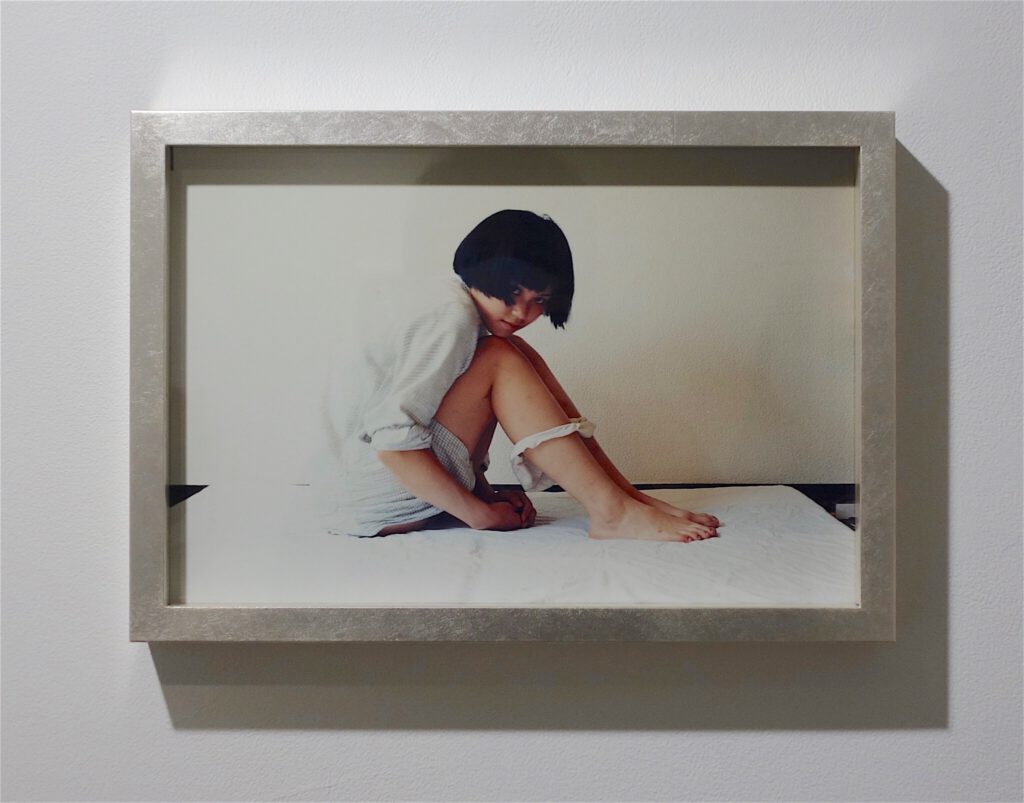

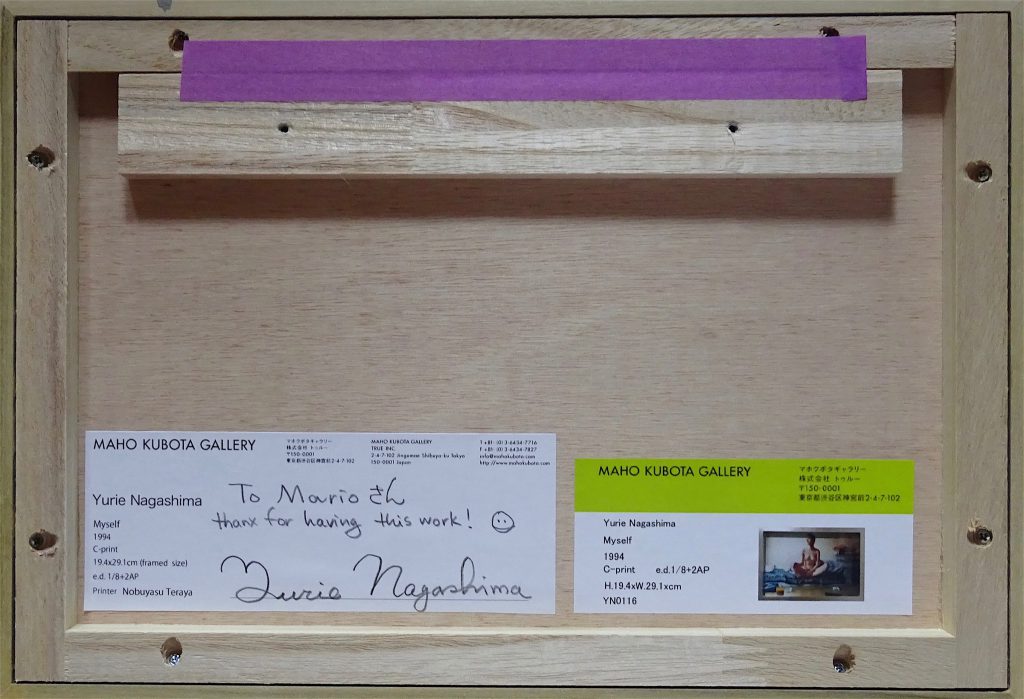
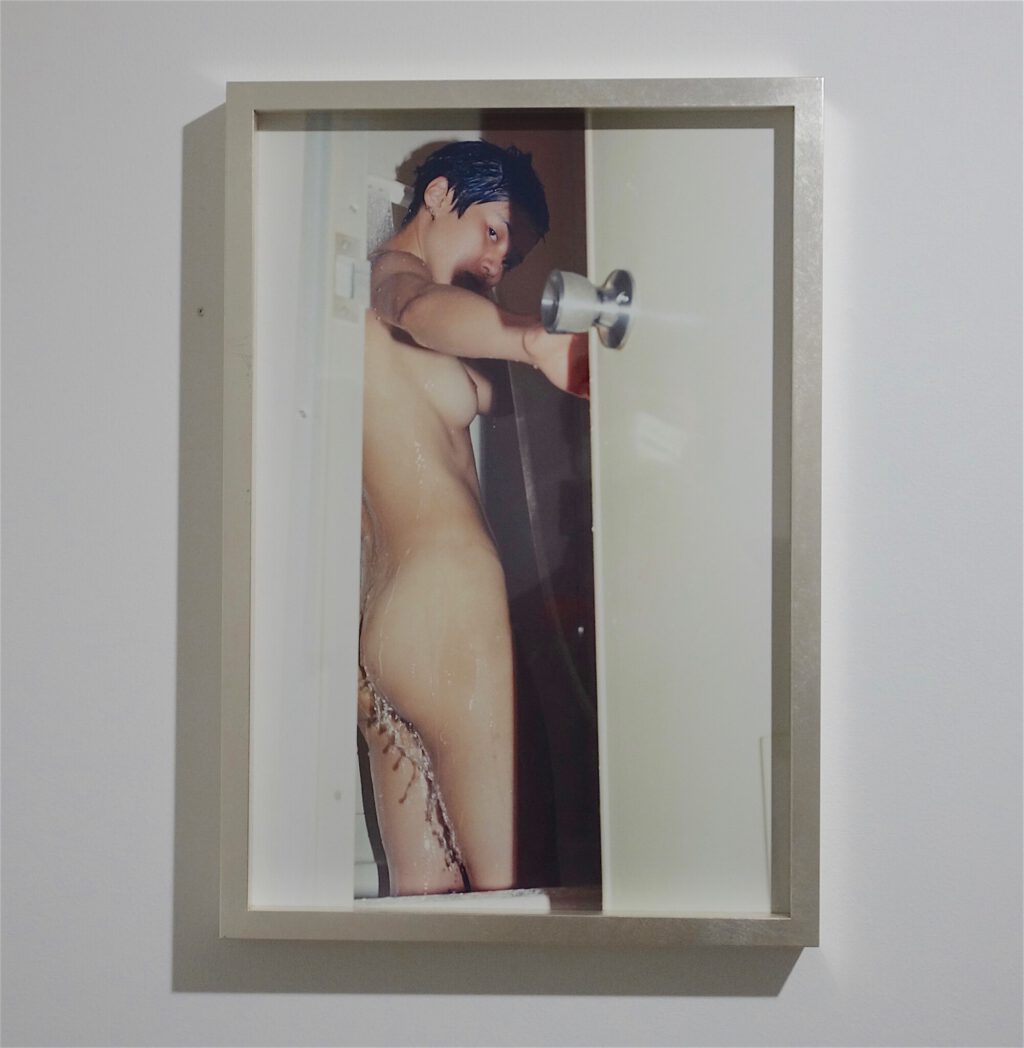
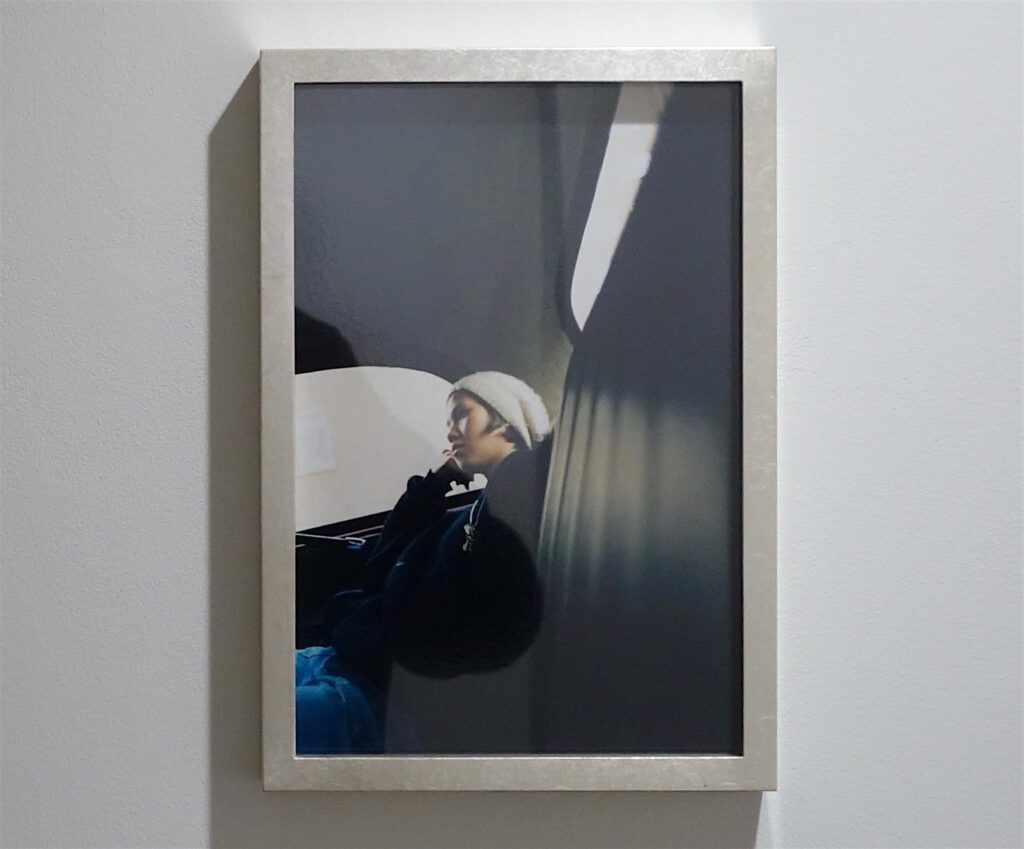
As I regard her nowadays one of the most important artists in Japan, her voice, as a 1973 born, reflects the slowly progressing transformation in contemporary society, in child education, in work-life balance, in gender-related partnerships, in demolishing the prejudice and discrimination amongst girls and boys, and lastly, in changing the social environment for the elderly and disadvantaged.
Nagashima, who found her path and self-esteem, can be called a mature artist and could be a role model for other Japanese artists, too.
Intelligently cultivating her own narrative and pro-actively stimulating freedom of expression, which she could probably reinforce at the California Institute of the Arts (CalArts), encouraged by extraordinary artist Catherine Opie.
Renowned ‘Kimura Ihei Photography Award’ (2001) and ‘Kodansha Essay Award’ (2010) followed, culminating 2017 in the legendary solo show at the Tokyo Photographic Art Museum, titled “And a Pinch of Irony with a Hint of Love”. A curatorial mix between ‘carte blanche’ and the practice by highly respected, then chief curator KASAHARA Michiko 笠原美智子, who actually works as the Vice Director of the ARTIZON MUSEUM in Tokyo.
Nagashima Yurie @ Tokyo Photographic Art Museum
And a Pinch of Irony with a Hint of Love
Sep. 30 — Nov. 26, 2017
https://topmuseum.jp/e/contents/exhibition/index-2851.html
長島有里枝 個展 @ 東京都写真美術館
そしてひとつまみの皮肉と、愛を少々。
2017.9.30 — 11.26
https://topmuseum.jp/contents/exhibition/index-2850.html
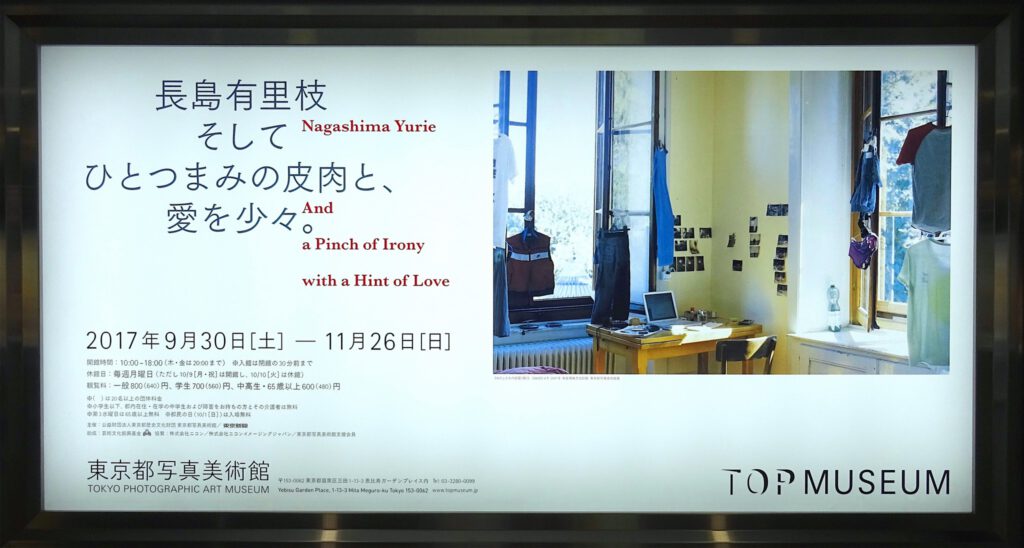
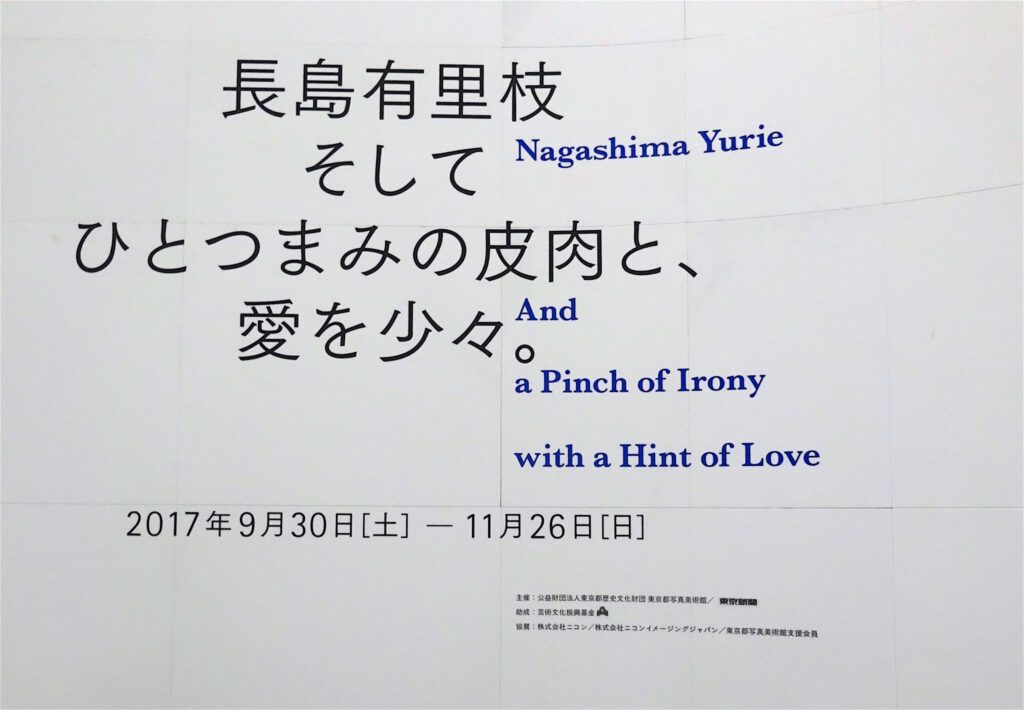

(Picture on the right: “Self-Portrait(Full-Figured, Yet Not Full-Term)” 2001, Collection of the TOP MUSEUM (Tokyo Photographic Art Museum) 東京都写真美術館蔵)
courtesy cinra.net, interviewer and art writer SHIMANUKI Taisuke 島貫泰介:
野村友里が語る長島有里枝。写真展から見えた「戦い続ける姿」
1990年代半ばごろ。インターネットもSNSもない時代の日本で、若い女性写真家のデビューが相次いだムーブメントが起こった。それはいつからか「ガーリーフォト」「女の子写真」と呼ばれ、彼女たちがとらえた10代から20代ならではの瑞々しい写真は、年長の雑誌読者や同世代の女性たちから熱狂と共感をもって迎えられた。HIROMIX、蜷川実花、そして現在、東京都写真美術館で個展開催中の長島有里枝も、その潮流から現れたアーティストだ。けれども、彼女たちの表現は、本当に「かわいい」「きれい」「はかない」といった耳慣れた形容詞だけで説明できるものだったのだろうか?
今回、24年の長島有里枝の活動を振り返る個展を訪ねたのは、本人とも親交のあるフードディレクターの野村友里。フードクリエイティブチーム「eatrip」を主宰し、顔見知りも初対面の人も、みんなが一緒に食卓を囲む体験を生み出す彼女は、写真家としての友人の姿に何を見出すのか?
写真に記憶されている、中性的な独特の目の強さが、当時の有里枝ちゃんの気持ちを雄弁に訴えている。
会場入口。『そしてひとつまみの皮肉と、愛を少々。』という、料理のレシピを思わせるような展覧会名の印象についてから、野村は語り始めた。
野村:とっても有里枝ちゃんらしいと感じました。こないだ私のラジオにゲストで来てもらったのですが、本人は「写真をはじめてから24年が経って、これでひと区切り。だから、ちょうど端境期の展覧会なんだよね」って言っていました。
有里枝ちゃんと私はほとんど同年代で、仲のいい周りの友だちもそう。だから、みんなそれぞれに脱皮というかターニングポイントの時期が今だね、って意識があるんです。好きなことをやってきて、これからも続けていきたいって意識はある。でも同時に「次はどこに行こう?」って考えている。今日は、有里枝ちゃんの気持ちを作品から知る機会だなと思って楽しみにしてきました。
please continue via:
https://www.cinra.net/report/201710-nagashimayurie
Further on, as a reference, the interview with Nagashima by Jennifer Pastore for Tokyo Art Beat interestingly reveals the cultural barriers she had to endure, some misperceptions in Japan and the U.S. and the hard fought, well deserved position in the history of Japanese photographic art.
Yurie Nagashima: And a Pinch of Irony with a Hint of Love
A Japanese feminist photographer reclaims her legacy.
quotes:
Nagashima:…(CalArts) Currents of feminism were very strong there, and my self-portraits included some pretty provocative poses. One of the other students said my work promoted a “geisha fantasy,” but in Japan there’s no such thing. I realized my peers did not have the same cultural background and couldn’t understand my work in certain ways.
…
They didn’t see you were satirizing tropes of women’s representation?
Nagashima: Hardly. There were also feminists who didn’t accept my work as feminism. Some did, though. Nakako Hayashi, an editor for Shiseido’s Hanatsubaki Magazine, was knowledgeable about third-wave feminism and wrote about its subculture heroes like Kim Gordon and Karen Kilimnik. She continued to argue that works by me and peers like Hiromix were part of the Girl movement happening in Western culture at the time. The art critic Noi Sawaragi(椹木野衣)saw the social satire, if not the feminism. Many critics – especially men – had no real feminist perspective. Twenty or 30 years ago you didn’t see as many women in art and media as you do now.
full interview at:
http://www.tokyoartbeat.com/tablog/entries.en/2017/11/yurie-nagashimas-and-a-pinch-of-irony-with-a-hint-of-love.html
With the newly earned Master’s degree in Sociology at Musashino University in 2015, her artistic language, embedded in excellent research and scholarship, will probably remain focused on gender-related topics, LGBTQIA in Japanese society, the struggle to combine motherhood and working career, progressing the human liberation for both, women and men, by re-contextualizing the social contract for future generations.
As mentioned earlier, Nagashima actively encourages feminism in Japan. Which has to be applauded.
In 2017 she gave an interview for the magazine i-D VICE, which has the title:
NAGASHIMA Yurie Interview “Feminism and Invention”.
(‘Invention’ is only one aspect of the possibilities for translation. The words ‘device’, ‘idea’, ‘contrivance’, ‘work out’ would do as well. For Japanese readers, the Chinese character 夫 = husband, suggests another subtle interpretation of the title.)
長島有里枝 インタビュー 「フェミニズムと工夫」
https://i-d.vice.com/jp/article/7x4mqa/yurie-nagashima-long-interview-1
In March 2018 she spoke/lectured prominently at the Artworld Talk series during ART BASEL Hong Kong (not Miami Beach as mentioned at ART BASEL website), titled:
Artworld Talk | Feminist Aesthetics?: Movements and Manifestations
Frida Kahlo and Käthe Kollwitz, Yurie Nagashima, Nilima Sheikh, Yu Hong, John Tain and Dr. Yeewan Koon
https://www.artbasel.com/events/detail/6716/Artworld-Talk-Feminist-Aesthetics-Movements-and-Manifestations
Feminist Aesthetics? Movements and Manifestations
--1024x610.jpg)
With this kind of art-sociological lineage, her latest book received highly positive reviews and critics. A compendium of authority: well researched, sophisticated and critically explained. Nagashima rewrote, re-contextualized the Japanese history of gender-related photography in the 90’s, which thankfully functions as a new academic reference. Hope to get this important book translated into English. For the Japanese readers I would like to introduce the “contents”- page, see below.
「僕ら」の「女の子写真」から わたしたちのガーリーフォトへ
https://www.hanmoto.com/bd/isbn/9784908465116
目次
当事者から、異議を申し立てます。
1.ジェンダー規定的な写真カテゴリーはどのように成立可能なのか
2.本書が依拠する分析の方法
3.ジェンダー、セックス、性差について
4.資料選定の方法と、各章の構成
1章 「女の子写真」を振り返る
1.はじめに
2.飯沢耕太郎の「女の子写真」論
3.近年の文献にみる「女の子写真」言説
4.「女の子写真」言説の〝自明性〞を疑う
2章 未熟さと処女性―― 一九九〇年代初頭の「女性写真家」の言説
1.一九九〇年代は「『女の子写真』の時代」なのか
2.木村伊兵衛写真賞選評にみる「女性写真家」の言説
3.男性誌が生み出す「女性写真家」像
3章 レベル・ガールズ、革命のきざし
1.プレ「女の子写真」期における女性写真家の言説
2.若くて、女性で、現役美大生
3.「撮る側」と「撮られる側」の権力関係を攪乱する
4.「セルフヌード」の誕生
5.定まらない「若手女性写真家」像
6.「大人」を喜ばせるためじゃない
7.わたしのカメラはペニスじゃない
8.〝理解ある擁護者〞になりたい「男性」論客たち
4章 「僕ら」のアイコン、ヒロミックスの言説
1.ヒロミックスと「女の子写真」が変える、女性写真家の言説
2.ヒロミックスの登場
3.混同される「写真」と「写真家」
4.ヒロミックスは誰のもの?
5.「女の子」を所有しようとする男性論客の「コンプレックス」
6.〝わたし〞に引き寄せる、林央子の語り
7.飯沢耕太郎の「少女環境と写真の現在」
8.「女の子たち」への先入観と偏見に満ちたまなざし
9.「ヒロミックスが好き」特集の反響
10.論考「声とカメラ」における「女の子写真」の言説
5章 「女の子写真」とミソジニー
1.ジェンダー/セックス/セクシュアリティの混同
2.「女の子写真」の言説に抗う当事者たちの語り
3.「女の子写真」言説の影響力
4.「僕ら」に抗う「ガーリー」の言説
5.「もちあげもてはやす」という抑圧
6.現代美術の文脈における「女の子写真」言説
7.女性誌の写真特集にみる「女の子写真」への抵抗
6章 ガーリーフォトと木村伊兵衛写真賞
1.「女の子写真」からガーリーフォトへ
2.「女の子」の言説に対する批評性の欠如
3.「私」における性差、歴史的差異への無関心
4.「女の子写真」言説への反論
5.一人歩きする「女の子写真」
6.カテゴリー名を変えても解決しないこと
7章 なぜ「女の子写真」ではいけないのか
1.『「女の子写真」の時代』における「女の子写真」の言説
2.言語〝以前〞の領域に押しやられる「女性アーティスト」論
3.《女性原理》と《男性原理》
4.宮迫の理論における問題点
8章 「ヘアヌード」写真ブームへの異議申し立て
1.「女の子写真」の論客が語らなかった二つの背景
2.ヘアヌード写真ブームとはなんだったのか
3.「ヘアヌード」に対する女性誌の反応
4.男性写真家の〝闘争〞に利用される女性の身体
5.女性たちにとっての「ヘアヌード」写真ブーム
9章 ガーリーフォト、新しいフェミニズム
1.「ガーリーフォト」と第三波フェミニズム
2.林央子と松谷創一郎の「ガーリー」、「ガーリーフォト」論
3.ガーリー・カルチャーと「乙女」文化
4.第三波フェミニズム
5.〝 every girl is a riot grrrl〞 (すべての女の子はライオット・ガール)
6.ライオット・ガールの女性的表象とメディアイメージ
10章 自分のために「声」をあげる
おわりに
May I hereby politely interfere with a personal anecdote, as I regard myself a third-wave-feminist, having bought German feminist magazines EMMA and COURAGE during university days. During the early 80’s, my sexually liberated, (some bi-sexual) female partners (who openly showed their vibrators, taken out from the night drawer) lived in a West-Berlin feminist environment. That was my normal living situation, where ‘Alternative Liste’ and the ‘Green Party’ ruled.
As students, I and my ‘punk-like’, green hair girlfriend from the same class in Japanology, arrived together in Tokyo. I could directly experience how she had been harassed by the local people. Sadly, because of the social oppression, she returned a view weeks later back to Berlin, alone.
While writing these sentences, I remember now the similarities between my former girlfriend and the then young Nagashima’s attitude.
From my ethnological point of view, by being neutral, only observing, I could also say, that in the past 30 years, Japan’s women’s behavior became worse. This observation contradicts purposely with the earlier written sentence: “slowly progressing transformation in contemporary society”.
Let me explain why.
In abstract terms:
TV and radio programs, TV commercials, Manga, Anime-films, women magazines, popular music (not only AKB48) became even more childish and pink-kawaii-feminine than in the 80’s.
Kawaii female TV announcers function as a role model for young women, and intuitively influence and/or reflect the taste of mainstream Japanese population.
In abstract terms:
Existing gender separation in the (expensive, male-oriented) education system (including uniforms) didn’t change during these 30 years.
Women are on purpose being discriminated by men in their career.
Young mothers and fathers are responsible for treating, educating their children in stereo-type manners. And I don’t mean the 昭和- SHOWA-type Japanese women.
In abstract terms:
Socially discriminating female- and male–language didn’t change either.
On the contrary, the language barrier between girls and boys became worse.
One good example is the gender-specific writing by Japanese women in the social media.
Or what kind of pics are being up-loaded by young Japanese women on Instagram, Line and Facebook.
Young Japanese women’s consumerism tends towards expensive designer brand-items, “cute look” and unnatural “cosmetic surgery beauty”.
In abstract terms:
Segregative usage of language (male-female; female unnatural high voice), putting human-relationship into childish character patterns like ’Ore-sama-type’ 俺様系, ’Oji-sama-type’ 王子様系 for men, ‘O-jo-sama-type’ お嬢様系, ‘O-hime-sama-type’ お姫様系, ‘Tsundere-type’ ツンデレ系 for women, mirrors Japanese society’s infantility, the willingness not to grow up and not to act as a responsible human being (who should, for example, go voting).
In abstract terms:
Lack of long vacation for singles and families, lack of natural body contact amongst family members, relatives and friends, increasing sexless relationships (even in marriages), (second-) virginity phenomenon on both gender sides, dysfunctional communication between girls and boys are some examples which reflect Japan’s society’s anomaly.
In abstract terms:
Japanese companies’ ‘culture’, political parties, the political cast, which endorses the Emperor of Japan (and its male-oriented Tenno-system 天皇制), didn’t change in these 30 years either. The power structure is definitely conservative, chauvinistic male dominated. Keeping this kind of status quo in mind, I wonder where Nagashima wants to start her sociology-based projects and research. In her interviews several women-related dilemmas in work, media, society had been rightly pointed out and I honestly wish she can find a position to lever.
The weekly magazine “Kin-yobi” 週刊金曜日 could be of help to get an idea where to continue.
A perfect example regarding interdisciplinary art practice could be experienced last year in the Yokohama Civic Art Gallery, Azamino.
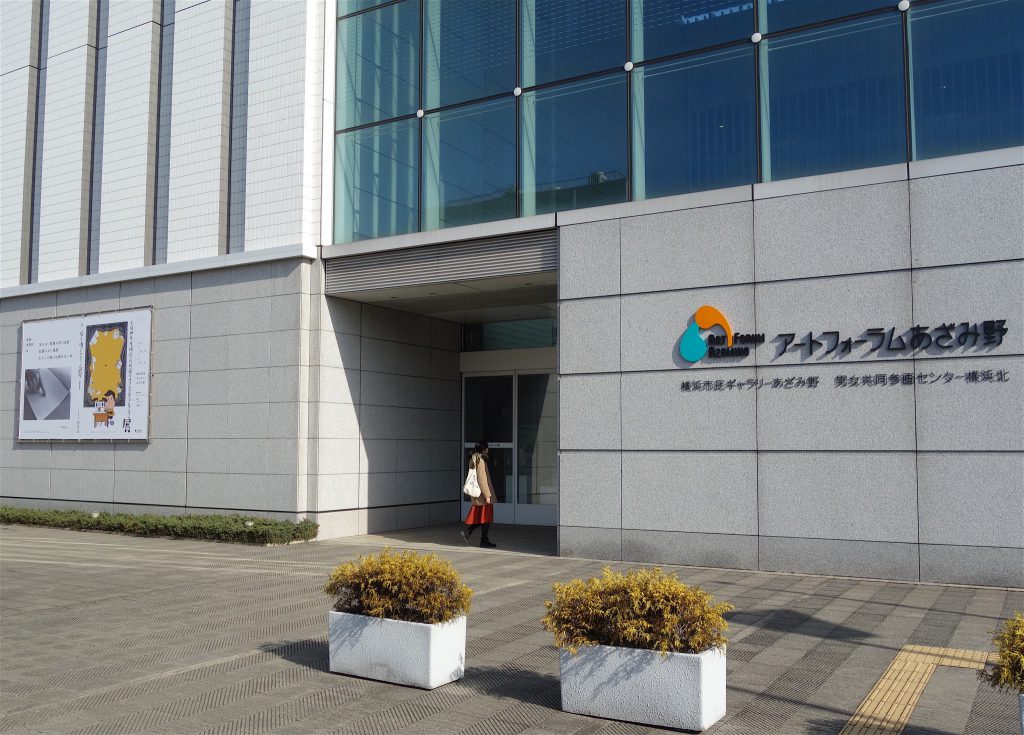

“Azamino Photo Annual: Yurie Nagashima Exhibition”.
あざみ野フォト・アニュアル 長島有里枝展
知らない言葉の花の名前
記憶にない風景
わたしの指には読めない本
2019/1/26 – 2/24
Free entrance, open 10:00 – 18:00
https://artazamino.jp/event/azamino-photo-20190126/
Reachable easily in 30 min from Shibuya Tokyo, see the well explained video.
https://artazamino.jp/access-and-opening-hour/
https://artazamino.jp
横浜市民ギャラリーあざみ野
〒225-0012 横浜市青葉区あざみ野南1-17-3
TEL 045-910-5656
対談「言葉の力とその限界」
*定員に達したため参加申込受付終了
2月23日(土)15:00~16:30
出 演|長島有里枝(出品作家/写真家)、少年アヤ(エッセイスト)
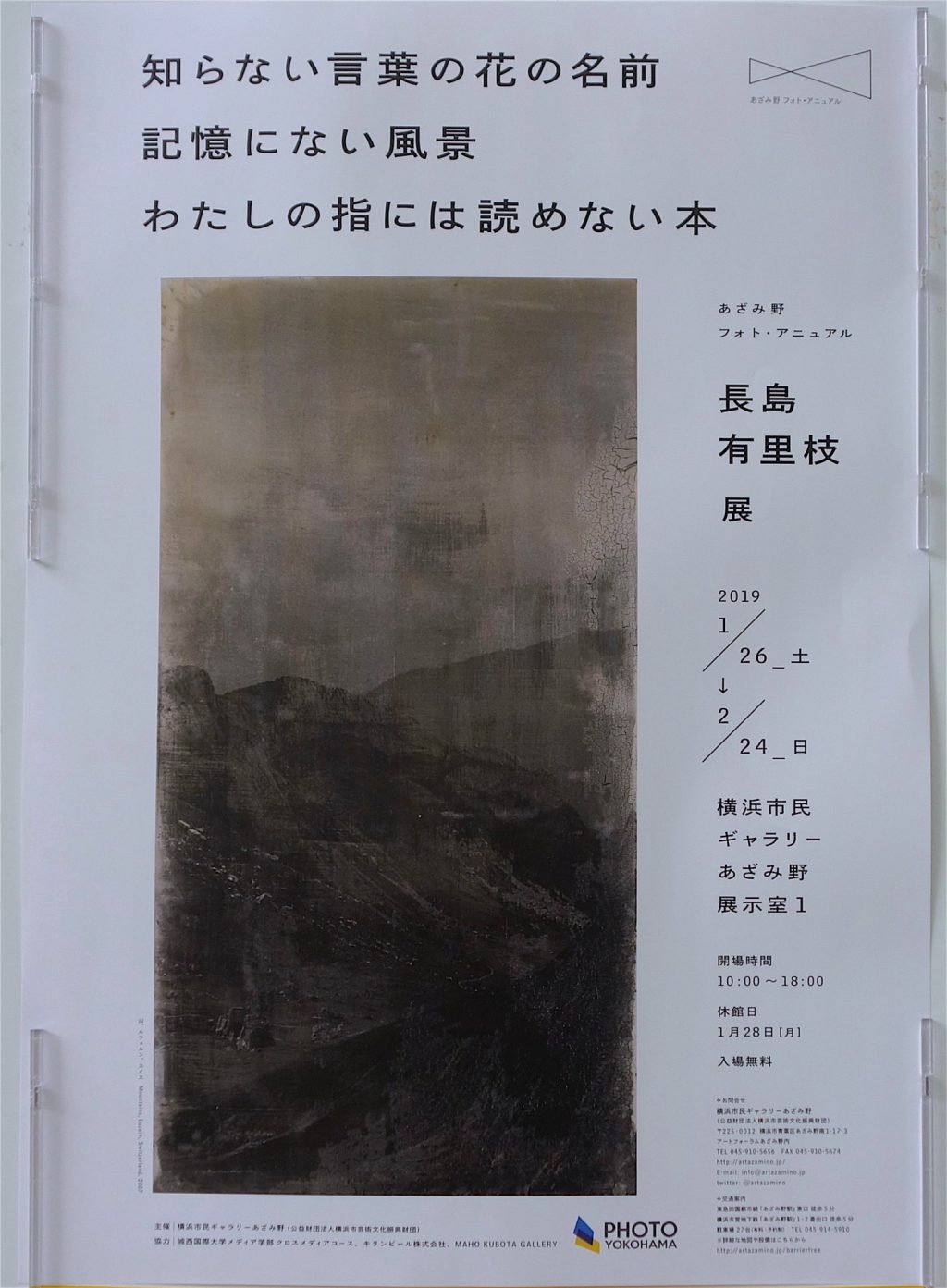
The landscape not in my memory
The book that can not be read by my fingers”
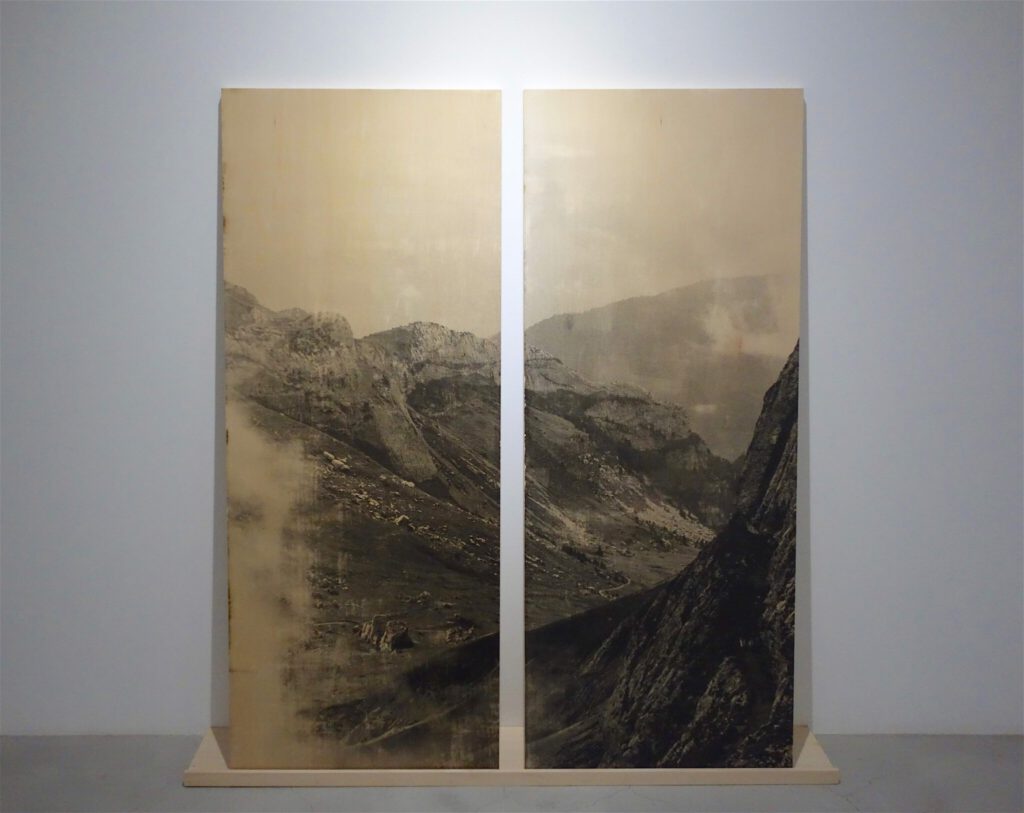
Actually exhibited in the running show at MAHO KUBOTA GALLERY
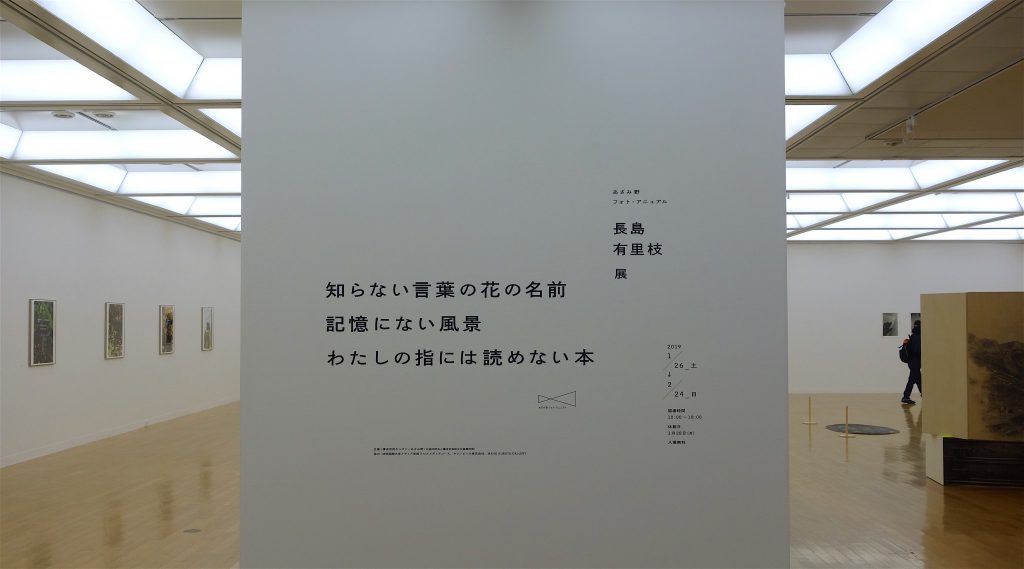
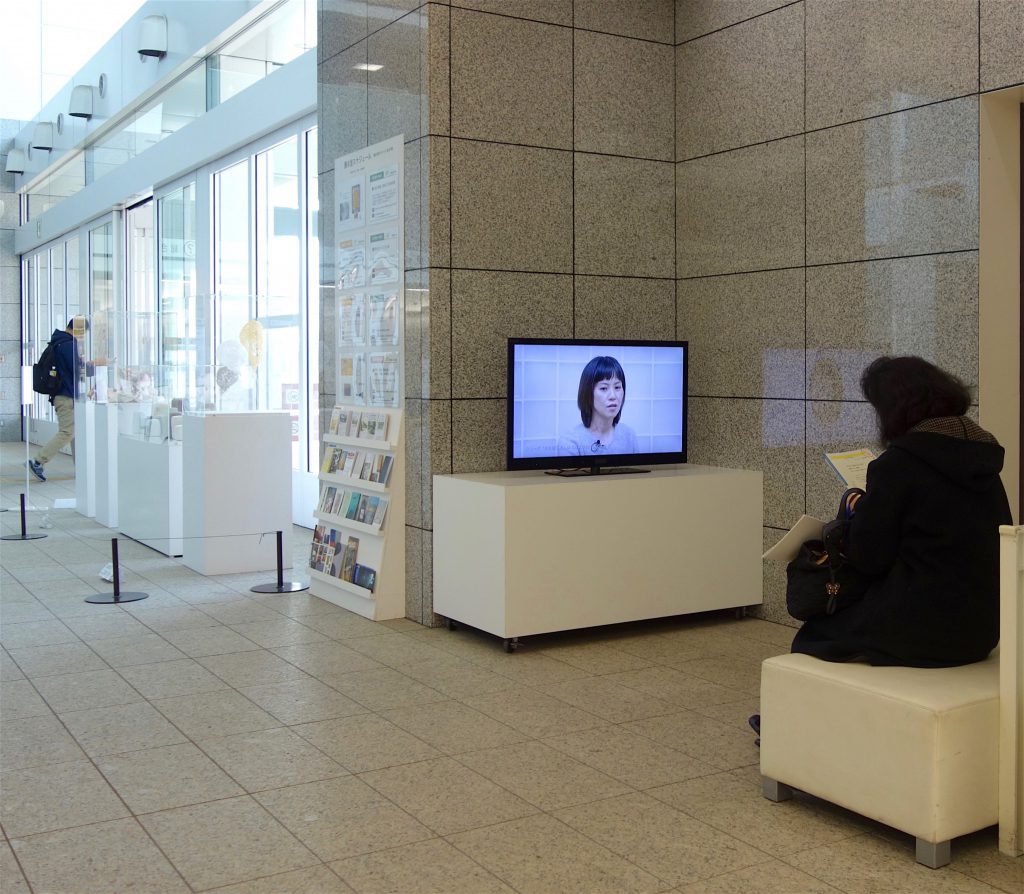
See Nagashima’s interview for this exhibition (to the curator AMANO-san: imo, different mood and shooting would have been better).
長島有里枝インタビュー[横浜市民ギャラリーあざみ野]
Howling with emotion, Nagashima’s attached sentence for this exhibition resonate in a wonderfully created, mysterious context:
“The flower named in an unknown word
The landscape not in my memory
The book that can not be read by my fingers”
This project developed into a collaboration between the artist, Ms. HANDA Kozue, who is visually impaired, and charisma-curator AMANO Taro 天野 太郎 , who is outspoken, provoking, influential, and if possible, trying to push the limits/boundaries of art practice a little bit forward.
This time he asked Nagashima to put up a text-photography show, based on her award winning book “Recollection of One’s Back” (Senaka no Kioku) from 2009『背中の記憶』.
長島有里枝「背中の記憶」2009
定価(税込):1,575円
http://gunzo.kodansha.co.jp/3838/8988.html
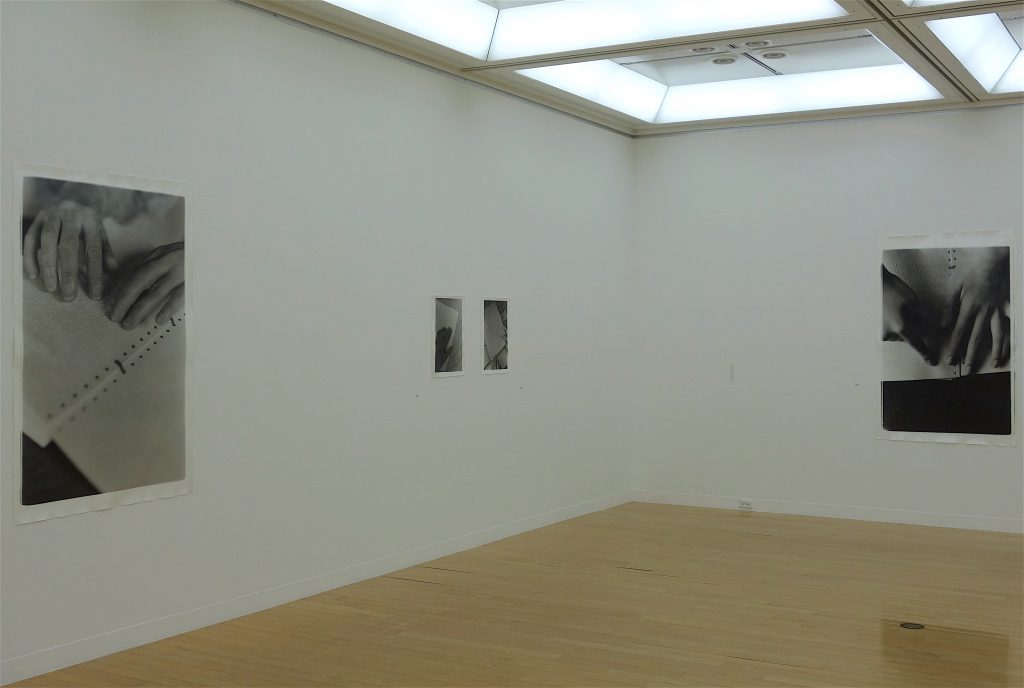
The social interaction with Ms. HANDA, who’s being introduced as a researcher in ‘contemplating art’, raise awareness and encourage conversation around handicapped people, improve their physical and psychological condition. The visitor receives guide devices with earphones to hear, a.o., what’s being read by visually impaired elderly.
See also the long feature about Nagashima with Handa, talking about the reception of art works.
AERA.dot OMURO Midori 大室みどり, 2019.2.6 (Asahi Newspaper company)
「私にとって写真は立体」 (“For Me, Photography is Sculpture”)
写真家・長島有里枝さんが 全盲の女性との対話で生み出したもの
https://dot.asahi.com/dot/photoarticle/2019020500010.html?page=1
Since over 100 years literature and photography experienced various forms of symbiosis.
In this regard Nagashima, who loves analogue b/w printing, found an eclectic expressionist way by executing wonderful, large, hand-made Gelatin Silver Prints with a cool rough cut, for the series ’Touch the book, Feel the stories’.
Keeping ‘photography as sculpture to feel and touch’ in mind, she used personal, memorial photographs and printed them on wood, resulting in creating mesmerizing structures of furniture.
The pictures had been taken mostly in Tokyo during 1993 and 2018, and assembled with ones from her art-in-residence period in Luzern, Switzerland in 2007 (including beautiful landscapes of the Swiss Alpes).
Each body of work challenges a new narrative, whereby a sense of wit and humor had to be de-coded, too.
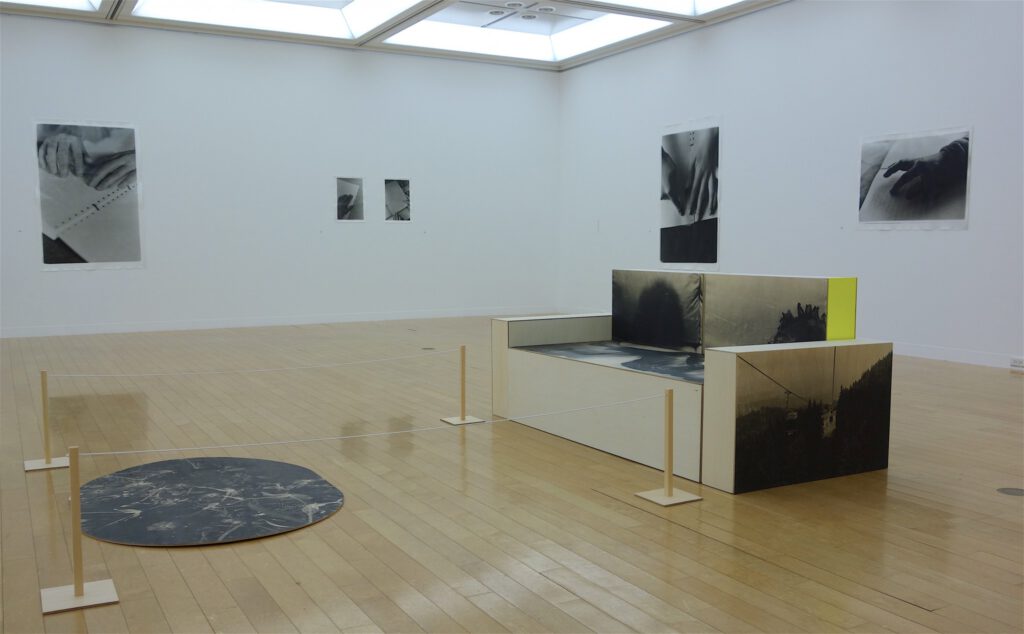
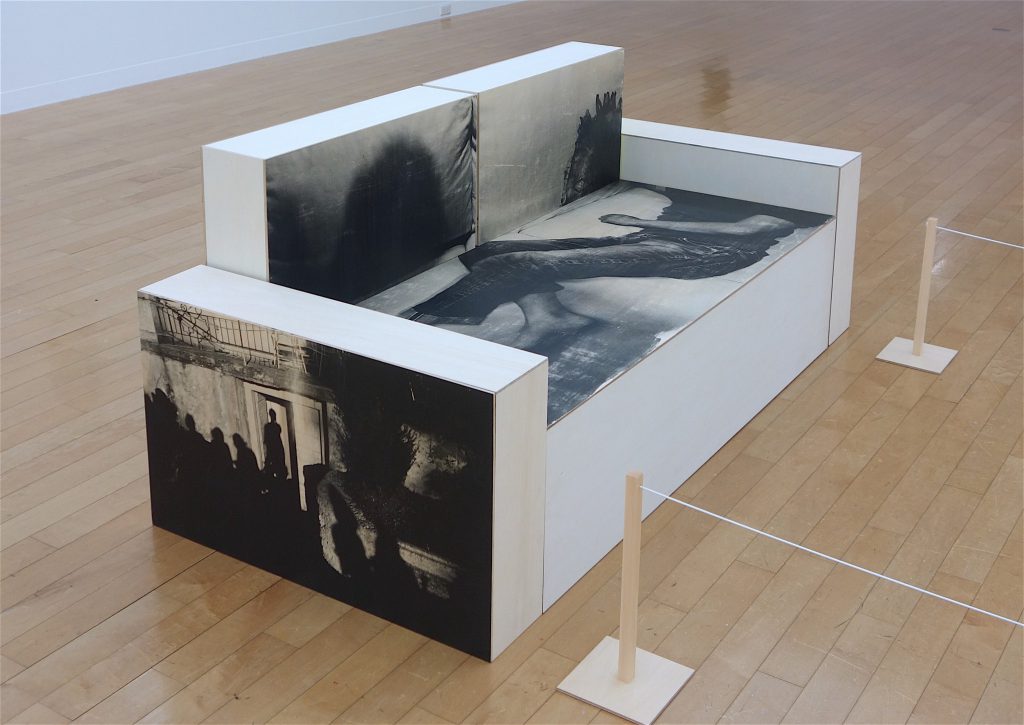
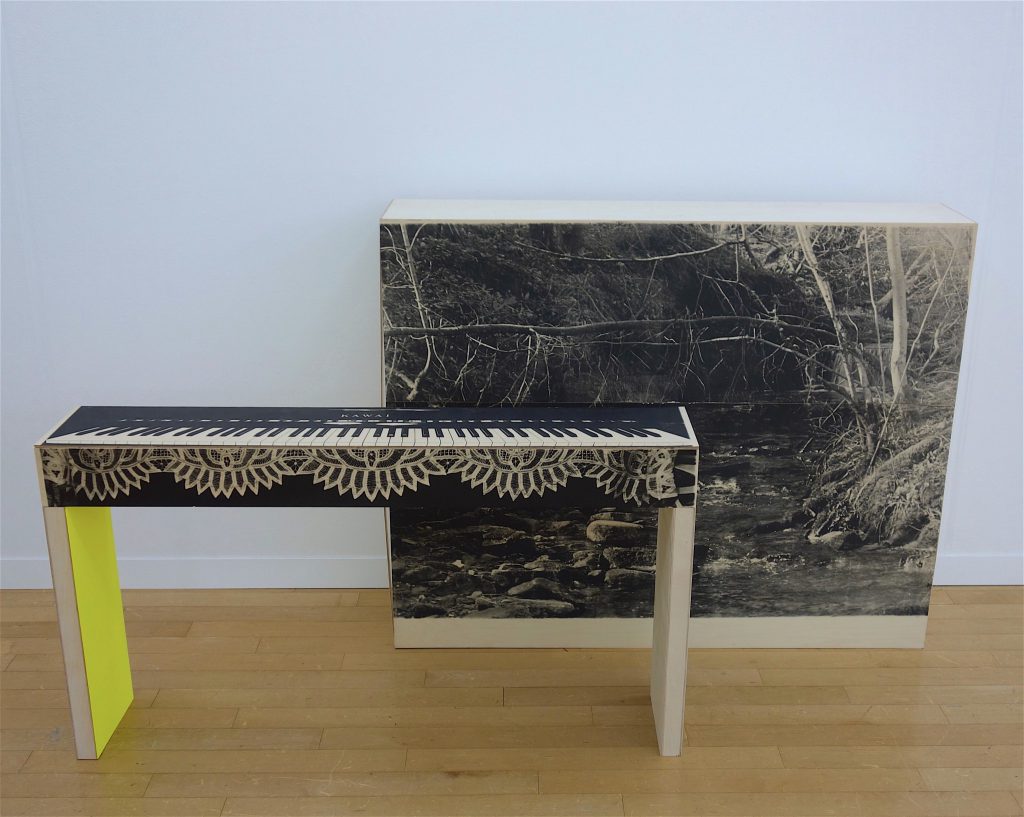
The series “Plants with labels” from 2008, originated by the death of Nagashima’s grandmother, lets a German native speaker fall into the realm of ‘triple lost in translation’: Latin, Japanese with Chinese characters and English.
As a minor remark I would like to politely emphasize that the language barrier, lack of knowledge of Nagashima’s Japanese written literature, which had been set by the curator as precondition, had somehow become an obstacle in fully understanding the artist’s intentions.
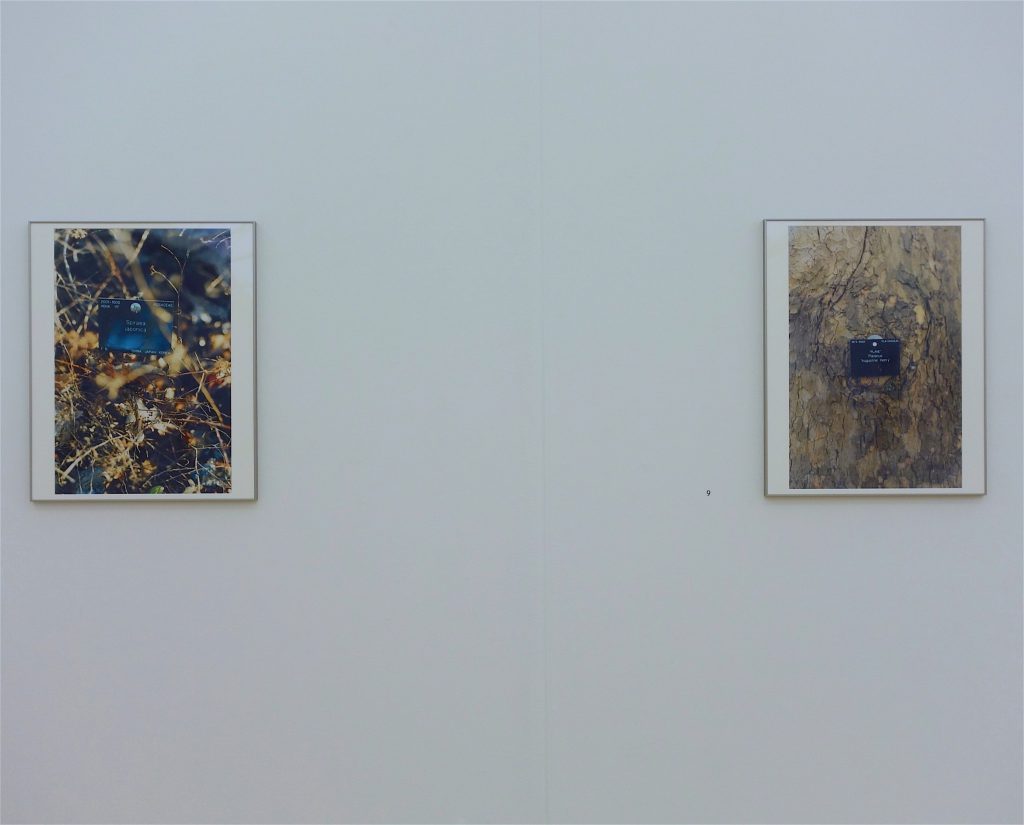
Readers of ART+CULTURE probably remember my critique about Nagashima, written last year. Happily, fortunate constellations (like everyone else personal problems in the context of Covid-19, a busy schedule, being often outside of Japan, 2 weeks of quarantine after arrival in Tokyo, etc.) made me attend Nagashima’s solo show opening reception at MAHO KUBOTA GALLERY last month. Of course with social distancing and our masks on. New mesmerizing works in this poetically felt ambience inspired me to slightly alter and up-date the former text as the Gesamtkunstwerk gets clearer with time, distance and knowledge.
In this exhibition, Nagashima presents 8×10 photograms made by placing some of the many pressed flowers that she inherited from her grandmother on photographic paper. Let’s read her actual state of mind, her expression of actual feelings, as I find her statement symptomatic for our time. Quote taken from the gallery’s website.
https://www.mahokubota.com/en/exhibitions/2749/
“Last year and the year before last, a chance to print black-and-white photographs by hand reminded me of how enjoyable it is to work in a darkroom. Printing photos by hand is like being in a dark place where you re-encounter and have a dialog with the images that you photographed.
Color prints are developed in complete darkness, but monochrome prints allow you to work using a red light. The lighting in the darkroom has a similar feel to that of my bedroom long ago when I would leave a small light on all night because I was afraid of the dark. The time I experience in the darkroom is like back then, when I would think about all sorts of things until I fell asleep. It feels like a world of mine alone, in which everything is ambiguous. It involves physical work, and relies on simple calculations, gut feelings, and luck.
That is where I transform something thought of as a mere image into something that possesses substance and exists in the world.
The spread of the coronavirus has caused people to grow apart, physically speaking. What I miss now is touching things, not looking at them. I feel deeply attached to the physical, material images that I produce while feeling my way around in the darkroom, where sense of sight is largely useless. Those feelings were so strong that I decided to shoot black-and-white photos in order to be able to print monochrome photos on my own.
I usually mount photos directly on the wall without framing them, but for this exhibition I decided to put something in front of the photos to act as a layer separating them from the viewer.”
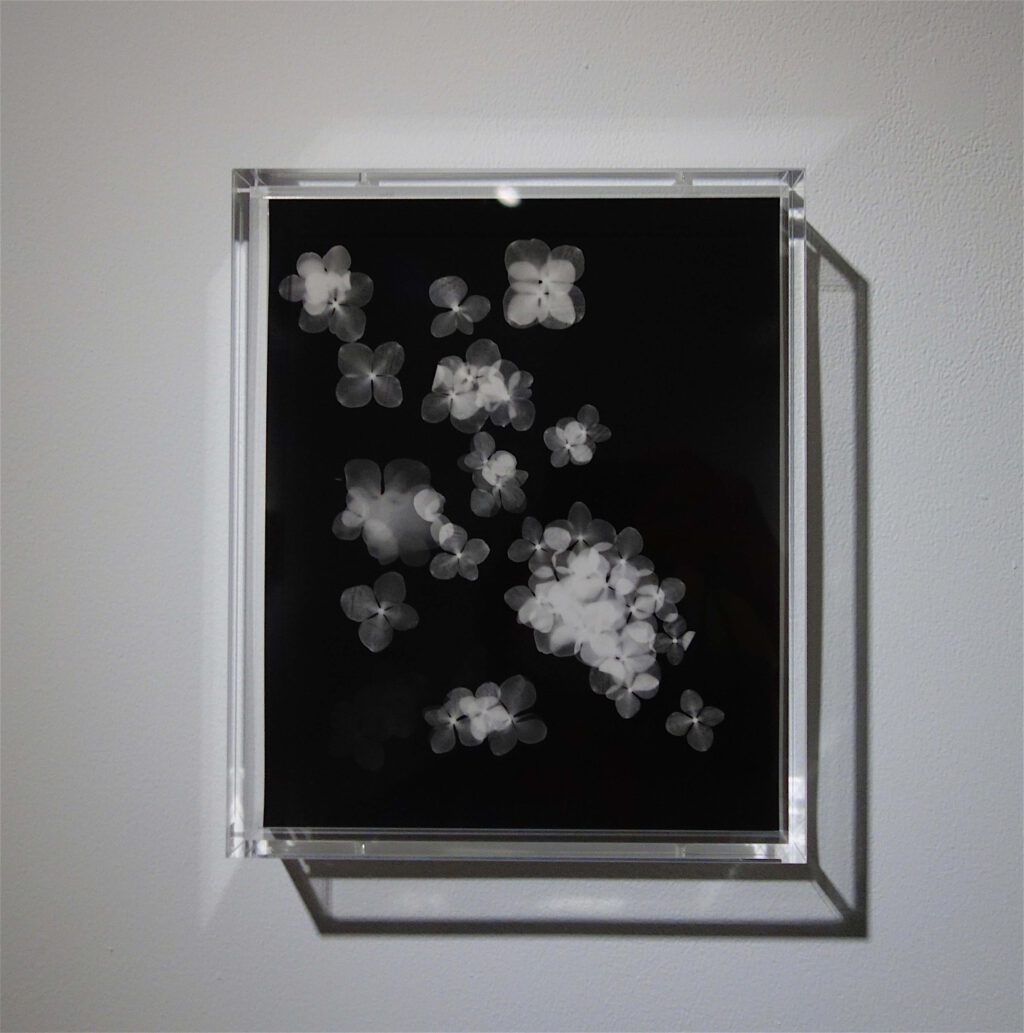



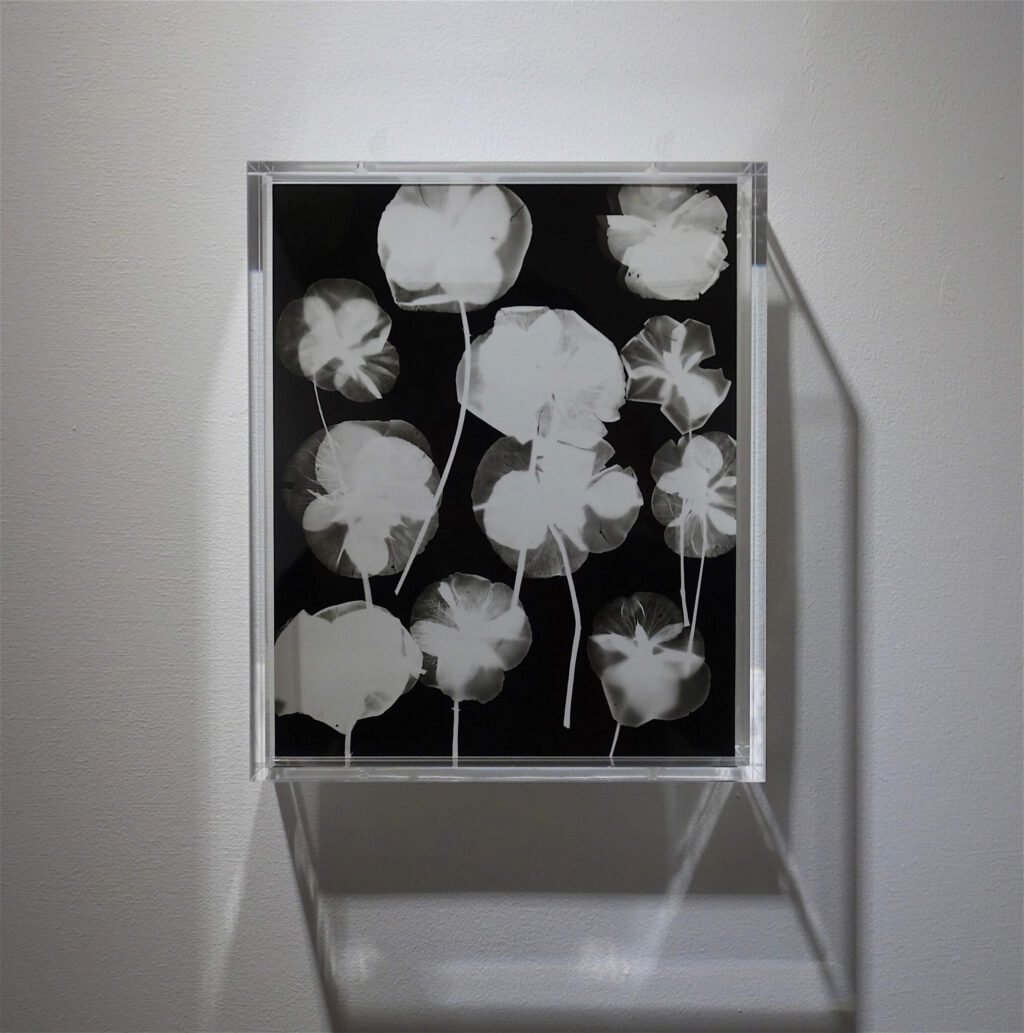

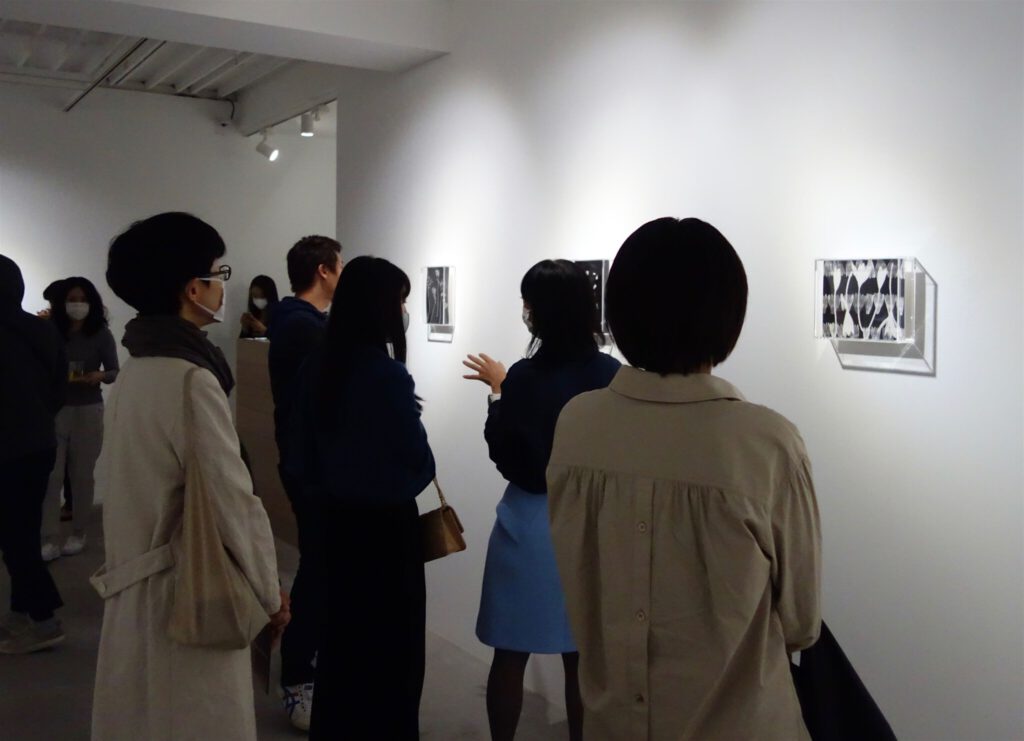
In the detail lies Nagashima’s hidden virtuosity of photographic artistry. A group show with Nagashima, seen two years ago, very much moved my heart. In my opinion, her artistic language does explicitly culminate in the body of work “Sennin-bari Project”. Concept, social engagement, aesthetic virtuosity, interactive communication between the protagonists and the audience, – perfectly arranged and executed. Bravissima.
First let me explain the reason of this extraordinary exhibition.
To commemorate what would have been the 100th birthday of famous painter and illustrator IWASAKI Chihiro, the Chihiro Art Museum had been holding a series of events throughout 2018, in which Nagashima received an important role.
Via a sensitive curatorial practice Chihiro’s illustrations from her children books intermingled with Nagashima’s photographs of her son and successfully gathered also with the attractive title “To Create, To Bring Up … as a Mother, as an Artist” a lot of mothers with children into the museum.

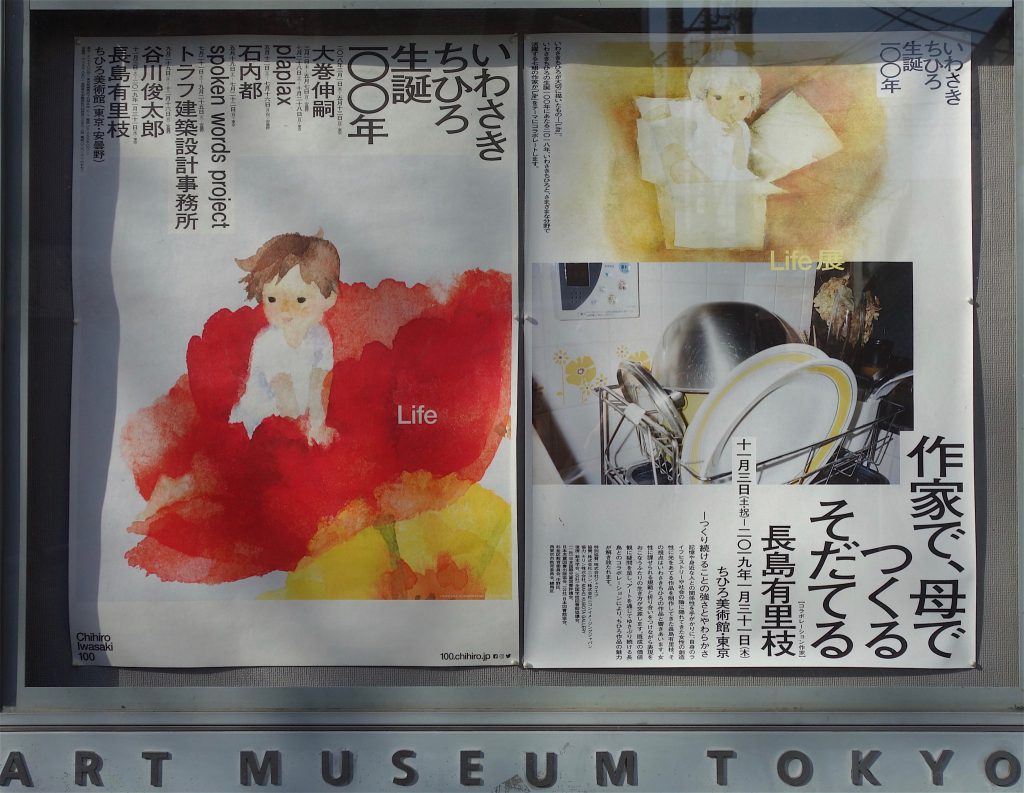
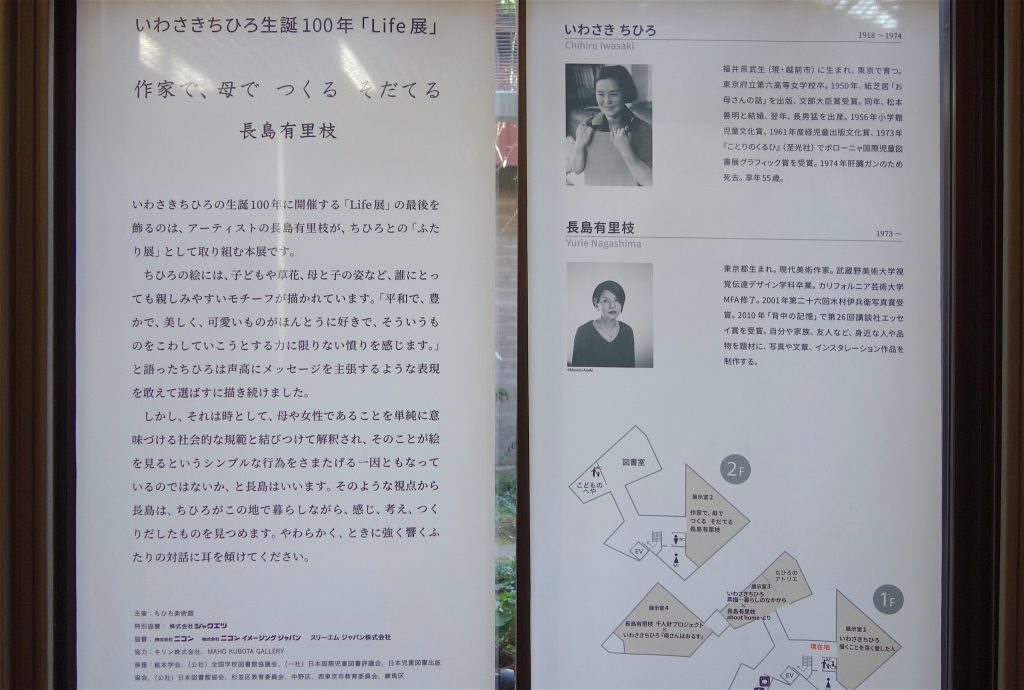
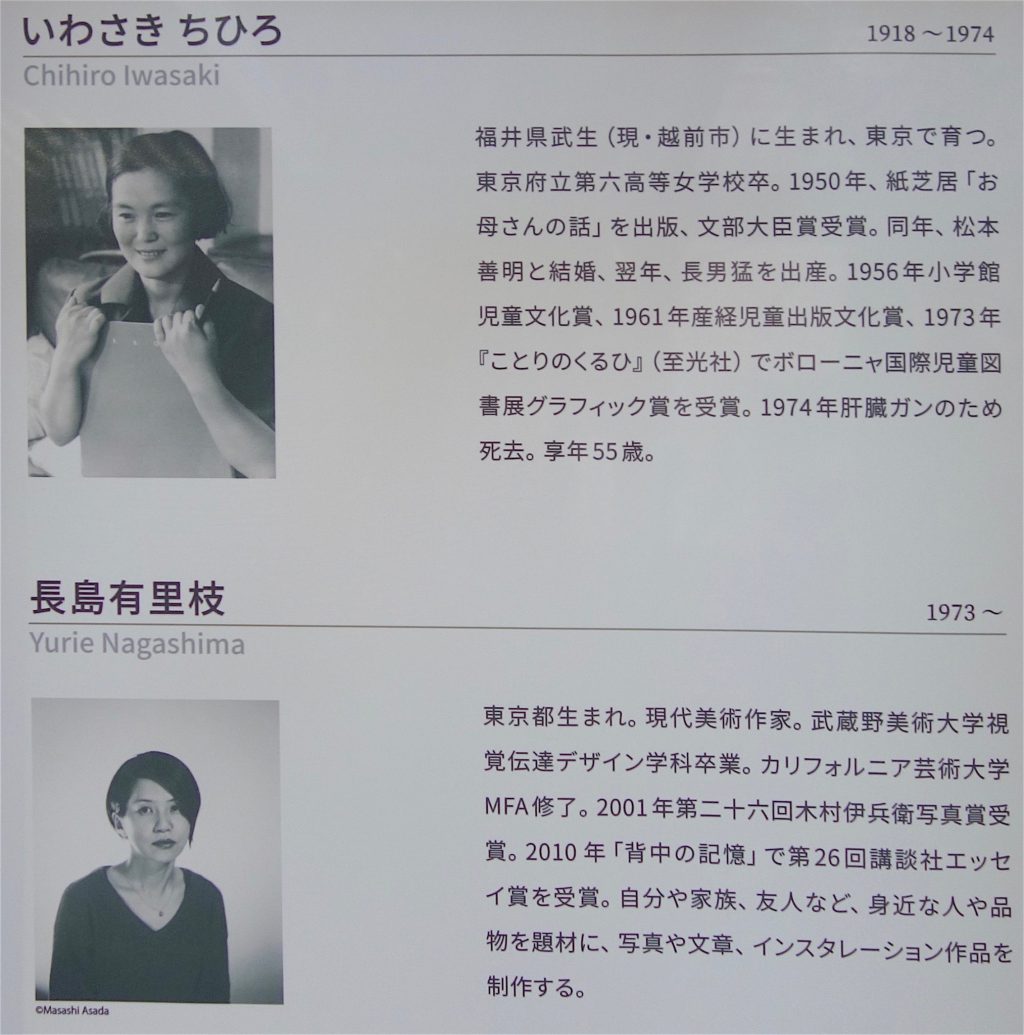
いわさきちひろ生誕100年「Life展」
作家で、母で つくる そだてる 長島有里枝
100th Birthday of IWASAKI Chihiro ‘Life Exhibition’
NAGASHIMA Yurie ‘To Create, To Bring Up … as a Mother, as an Artist’
2018/11/3 – 2019/1/31
https://chihiro.jp/tokyo/exhibitions/67278/
Chihiro Art Museum Tokyo
〒177-0042 東京都練馬区下石神井4-7-2
4 Chome-7-2 Shimoshakujii, Nerima-ku, Tōkyō-to 177-0042
https://chihiro.jp/tokyo/
Further infos, press releases see as follows:
Life展レポート
長島有里枝 × 多田玲子 × 下平晃道・Murgraph
「「戦争」と「女性」をまっすぐ見つめる時代を超えたふたりの作家。」
https://100.chihiro.jp/reports/1946
美術手帖サイト BT BIJUTSU-TECHO website:
いわさきちひろ生誕100年「Life展」
「作家で、母で つくるそだてる 長島有里枝」
会期:2018年11月3日~2019年1月31日
会場:ちひろ美術館・東京
https://bijutsutecho.com/magazine/news/exhibition/18489
Subdivided into 4 chapters, each exhibition room resonated a unique, thought provoking, heart touching atmosphere. The physical and mental sensations of children, mother and child relation, brought-up habitat, or, passive war experiences (in case of Chihiro, the Vietnam war) had been carefully re-contextualized.
Nagashima excellently dealt with what we call “mothering” qualities – life-affirming energies. A perfect example of Nagashima using socially engaged practice actually could and will be experienced in her “Sennin-bari Project”, which started in 2005 and is still ongoing, as a work in progress.
Check the links for the overview of the exhibition, I hereby attached one screenshot from the magazine PEN.
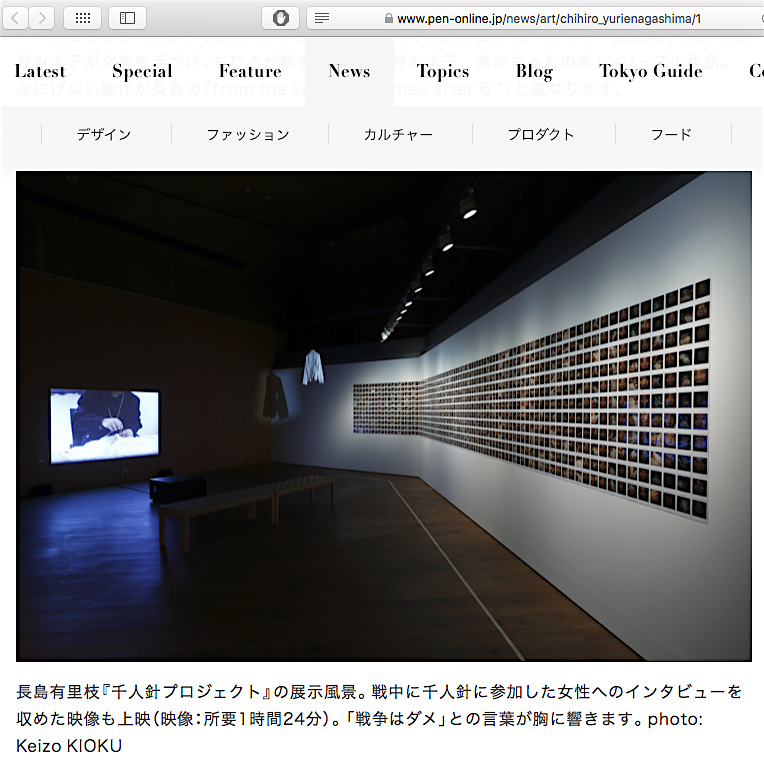
「いのち」の大切さが響く、いわさきちひろと長島有里枝の特別展。
https://www.pen-online.jp/news/art/chihiro_yurienagashima/1

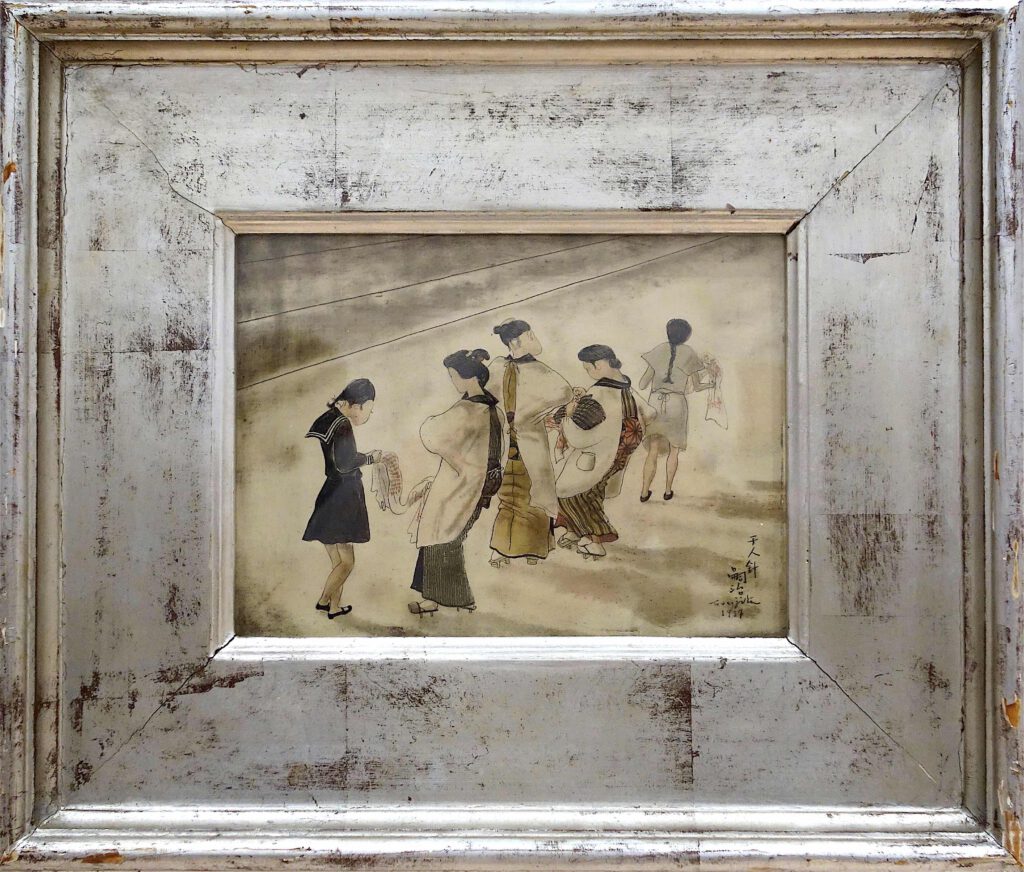
learn more at:
藤田嗣治・Léonard Foujitaの作品との出会い
Encountering the works by Léonard Tsuguharu Foujita
https://art-culture.world/articles/foujita-tsuguharu-leonard-tsuguharu-foujita-kimiyo-藤田嗣治/
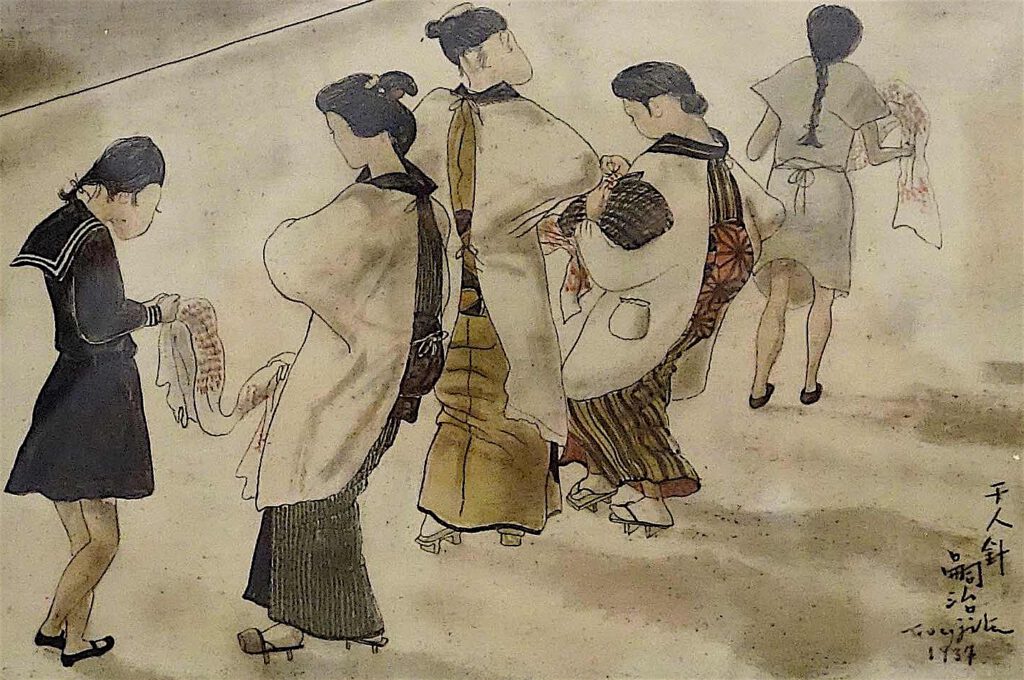

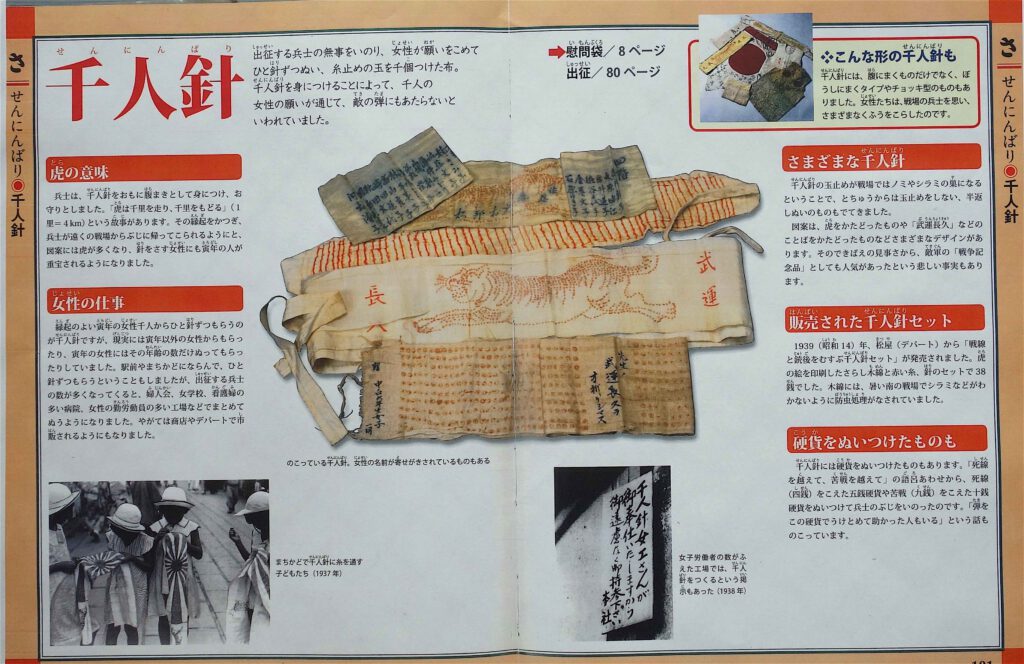
Very detailed visual review of the exhibition, see:
作家で、母で つくる そだてる 長島有里枝
2018-11-14
テーマ:観シュランガイド2018
https://ameblo.jp/artony/entry-12417680407.html
I personally regard ‘Thousand-person-stitches’ 千人針 or belt of a thousand stitches, as a contemporary art masterpiece and it should definitely make a world tour. Japanese women are stitching, in this case, not a belt but a shirt with a thousand stitches. Each ‘French knot’ stitch is made by a different woman and in the video work we hear some telling their war experience. ‘Sennin-bari’ (in the form of a strip of cloth) were normally given by the man’s mother, sister, or wife if married, as an amulet for the battle field. During fascist World War II with the Japan-Germany-Italy Axis, in order to meet demand, women’s patriotic organizations would gather to make ‘Sennin-bari’ en masse.
On purpose, I attached a rarely seen work from 1937 by Léonard Foujita with the same theme. The different artistic approaches by Nagashima and Foujita should be worth an exhibition of high caliber.
Besides the above mentioned epic artwork, one more reason why I regard Nagashima as one of the most important artists in Japan is her ability in discussing her background with others, and being able to contextualize her behavior and reaction also in a foreign language. Because of Japan’s ‘island country mentality’ (shimaguni-konjo 島国根性), most Japanese have a parochial view which makes a forth-bringing discourse obsolete. Trying to develop herself as a mature person, Nagashima travelled as a backpacker outside of her native country, in this sense trying to change the precarious situation she was living in.
One of the most crucial moments can be read from her dairy ‘Thousand-person-stitches’ (Sennin-bari diary), in which she explained how she had to stop taking pictures while visiting the (Japan-Germany-Italy Axis) related Nazi German Concentration Camp in Auschwitz. This happened in her youth, and I sincerely wish more young Japanese wanna-be-artists would have this important experience and adult conscience.
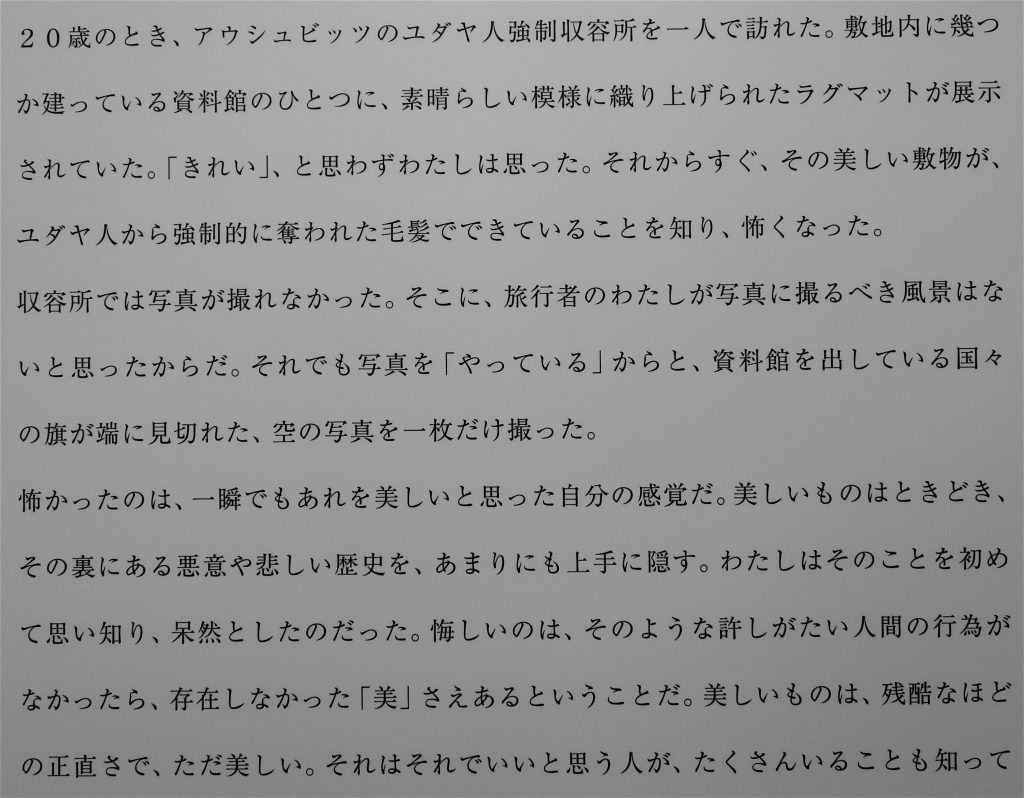
Finally, I do have an honest, serious request towards the many, professionally practicing curators in Japan and in other countries.
Is it possible to organize a group show of these 3 excellent artists, who in one way or the other, are taking feminism to their heart, obstruct social conformity, let the viewers reflect on women’s social issues, and while wrestling with the canon of (Japanese) artistic feminism, re-contextualizing it with superb, thought-provoking, beautiful art works?
SHIMADA Yoshiko 嶋田 美子
KASAHARA Emiko 笠原恵実子
NAGASHIMA Yurie 長島有里枝
Let this exciting Dream Team give their visual stimuli around the globe!!!
Tokyo, 14th of November 2020
Mario A
長島有里枝 Yurie Nagashima B&W
MAHO KUBOTA GALLERY
Oct 16 (Fri.), 2020 – Nov 21 (Sat.), 2020
2020年10月16日(金) – 2020年11月21日(土)
Open: TUE-SAT 12:00 – 7:00pm
開廊 火〜土 12:00-7:00pm
休廊 日曜・月曜・祝日
2-4-7 Jingumae Shibuya-ku Tokyo JAPAN
東京都渋谷区神宮前 2-4-7
https://www.mahokubota.com/en/exhibitions/2749/
NAGASHIMA Yurie 長島有里枝
http://yurienagashima.com
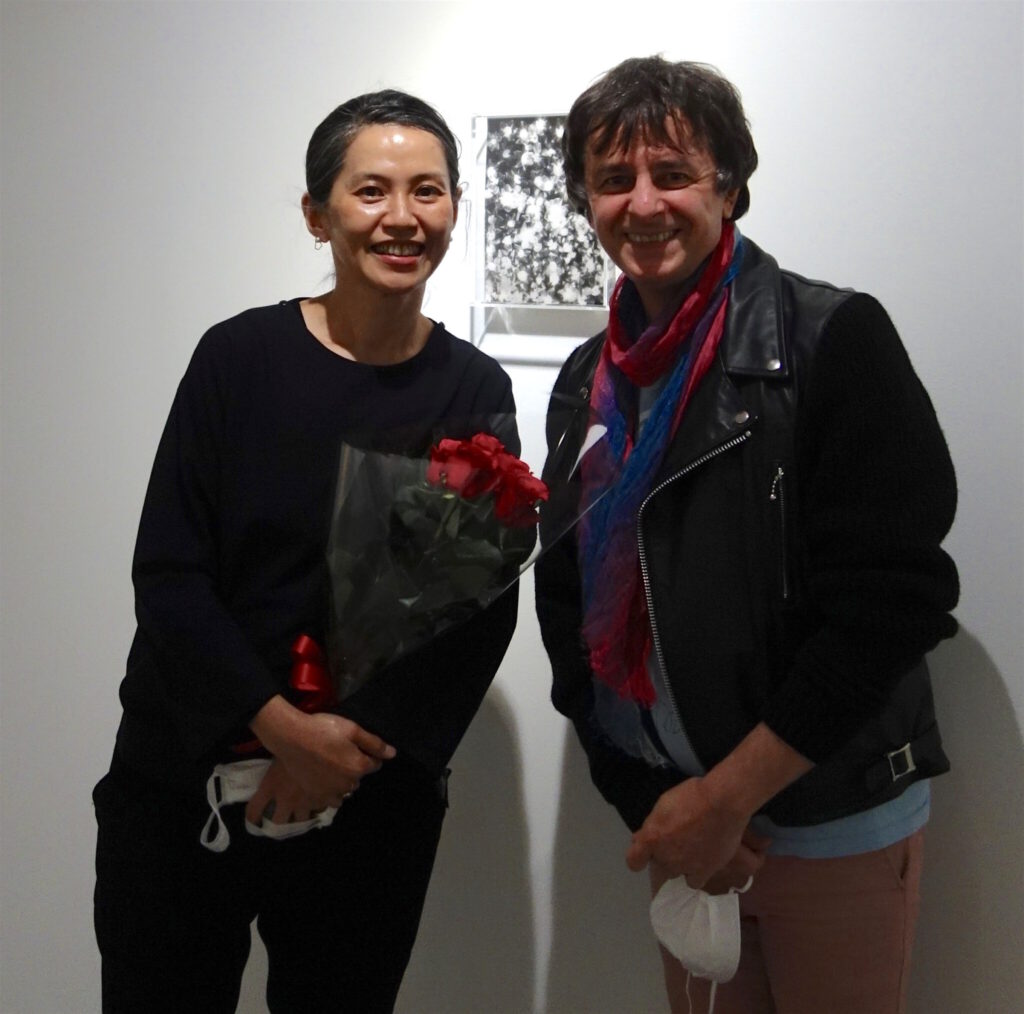
Time-slip, 25 years ago :-)

Refer also to ご参考:
非常に優れている企画展「Viva Video! 久保田成子展」@ MOT!
(現代の最高の日本人アーティストである長島有里枝さんは久保田成子の正統な後継者)
https://art-culture.world/articles/kubota-shigeko-museum-of-contemporary-art-tokyo-久保田成子/
ここに載せた写真とスクリーンショットは、すべて「好意によりクリエーティブ・コモン・センス」の文脈で、日本美術史の記録の為に発表致します。
Creative Commons Attribution Noncommercial-NoDerivative Works
photos: cccs courtesy creative common sense

